










































































































































Published
Publisher
Chief
Managing
Editor
Business Development Manager
Client
Design
Art
Design
www.RailExpress.com.au
The
From east to west, it’s an exciting period for passenger rail network projects across the country.
In Western Australia, Perth’s $1.86 billion METRONET Forrestfield-Airport Link is all but complete, set to begin operations this month.
Jointly funded by the Australian and Western Australian Governments, it will be the first passenger rail line that runs directly to Perth Airport. Along the way it will deliver three new train stations, increasing public transport options for Perth’s eastern suburbs and foothills area.
Domestic and international tourism will be boosted by the improved access between the city and Perth Airport, and new residential and commercial opportunities will be created around the new stations.
It’s anticipated an average of 20,000 passenger trips will be made each day on the new rail line in its first year of service, increasing to 29,000 by 2032.
It’s all part of the ambitious public transport revamp initiated by the State Government, with another 13 projects planned or underway.
Adding to this transformation is the the resumption of railcar manufacturing in WA, with the first set of trains to be made locally for 30 years now being tested on the tracks.
By 2029, it is anticipated that 246 new C-series railcars will be locally built, spearheaded by the expertise of rolling stock specialist Alstom.
Meanwhile, on the other side of Australia, the Queensland government is preparing to roll out the world-class European Train Control System (ETCS) on its network.
With the groundbreaking Cross River Rail system well into construction and a raft of other significant projects in the SE Queensland rail pipeline, a number of trains are being tested with the world-class digital signalling technology.

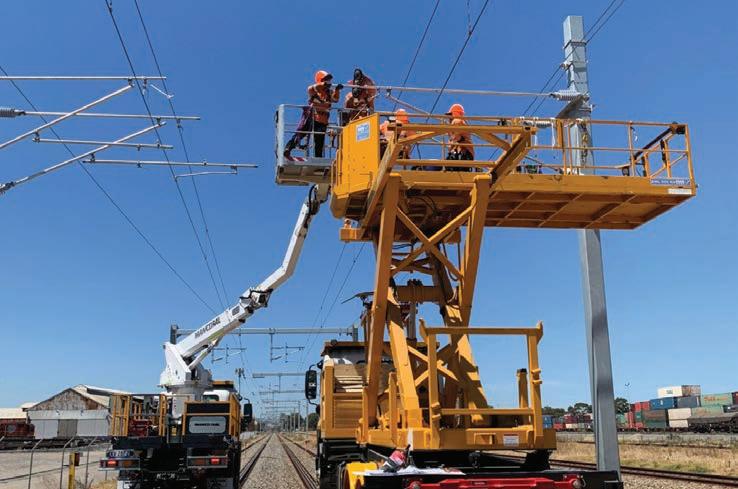
In essence, ETCS allows the train to know its location precisely, which in turn allows trains to safely be scheduled to travel closer together.
Continuous information is relayed between the Rail Management Centre and locomotives via trackside equipment, which will be crucial for safe travel within Cross River Rail’s tunnels, where this digital technology will be relied upon rather than conventional trackside
signalling equipment such as coloured lights. It’s the next step in the modernisation of train operations, and other states are sure to keep an eye on how it performs to determine if it could be applied to their respective transport grids.
This edition of Rail Express looks at the progress of the initiatives in each state: we feature Alstom’s involvement in the manufacture of the railcars for WA, while also focusing on how ECTS is fast becoming a reality in the Sunshine State.
Of course, all the sophisticated and advanced rolling stock in the world count for nothing if the tracks they travel on are not built or maintained to necessary standards.
That’s where plant and equipment specialists are valued. They bring a wealth of the latest innovations and apparatus to the industry, and help ensure the highest quality work can be carried out within the rail environments.
Inside, we showcase a listing of some of the best plant and equipment dealers and suppliers in the country, and also take an extended glimpse into the operations of some of the businesses.
The types of products are varied and many: track rail transporters, overhead wiring units, tamping machines, clip inserters, spike pullers, ballast regulators, excavators, down to basic welding devices and power engines.
There is bound to be information on innovations and services which can help successfully deliver cost-effective solutions across a broad spectrum of projects, from large complex programs to narrow working maintenance windows.
Elsewhere, read about Siemens’ transformational cloud-based digital interlocking system, which enables all the interlocking operations of any railway system to be managed digitally from the one spot.
More rail sector staff are profiled in the Workforce section, and our industry partners continue to inform us with the latest updates from their respective organisations.
We also welcome Dr Hermione Parsons as the new executive officer for the Australian Logistics Council, who contributes her first column this issue.






Rail passengers have risen again in the second quarter of 2022, but patronage remains 38.1 per cent below pre-pandemic levels.
National patronage increased by 39.19 million passengers or 40.4 per cent for the period from March–June 2022 compared to the previous quarter, but figures were still below pre-pandemic levels.
The urban rail network saw the largest increase in passengers, with a 41.5 per cent increase, which equated to an additional 32.59 million passenger journeys during the quarter.
Australasian Railway Association chief executive officer Caroline Wilkie said rising inflation and increasing petrol prices meant there had never been a better time to return to public transport.
“Public transport offers an affordable, convenient and sustainable option, making it a great choice as we all navigate the rising cost of living,” she said.
“Rail has traditionally been the most popular transport mode for commuters and will be an essential part of ensuring the sustainable growth of our cities.
“Our passenger operators continue to support safe, accessible and convenient transport options for the community and it is important we welcome more people back to rail as the weather warms up.”
How rail patronage fared since 2019.
All jurisdictions recorded increases in passenger numbers during the quarter, although June’s national figures were down compared to May as some had increased work-from-home arrangements in response to winter COVID concerns.
NSW and the ACT recorded the biggest rise, with patronage up 48.4 per cent or 22,761,782 passengers.
Victoria saw a 34.1 per cent or 10,611,520 increase in passengers, and Queensland patronage rose 48.1 per cent or 3,550,529 passengers.
South Australia’s passenger numbers also grew 27 per cent or 738,723 passengers, while Western Australia saw a 15.1 per cent or 1,336,552 increase in passengers during the quarter.

Patronage in New Zealand increased by 62.8 per cent or 1,840,042 passengers during the quarter. The quarter was 27.5 per cent down from the same time last year and 48.5 per cent below pre-COVID levels.
Increasing patronage was recorded against all rail modes, with urban rail having the greatest rise in numbers.
The first cohort of students has successfully graduated from the Inland Rail Skills Academy (IRSA) Foundation Course.
In addition to developing skills in construction, students have accessed training in financial literacy, digital literacy, literacy, numeracy, and career preparation skills.
The successful graduates can now apply for positions working on the Inland Rail project with various contractors, or graduates can also take their studies further by undertaking a Certificate II in Rail Infrastructure – some graduates have already registered for this – or in infrastructure and resource qualifications.
Of the first 11 graduates from the program, five have fully completed a Certificate II in Construction, providing options for a range of careers. The remaining students have completed with competencies or partqualifications.
has funded the Foundation Course as part of its commitment to ensuring local and local First Nations people make the most of the employment opportunities on Inland Rail.
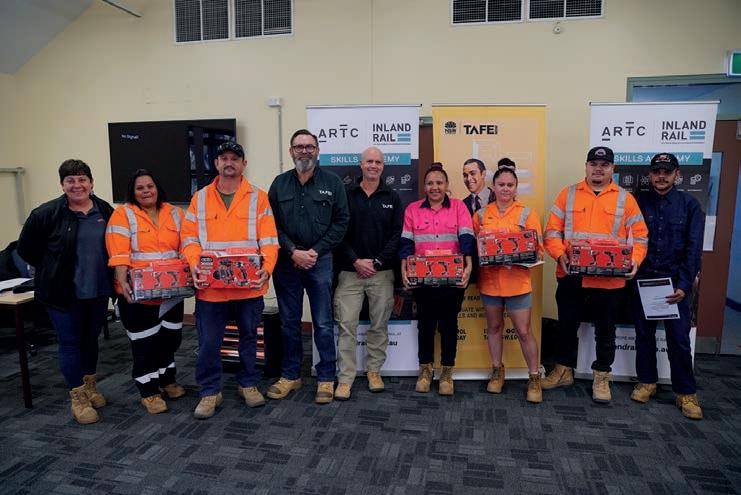
Inland Rail Director of Health, Safety and Environment, Steve Jones, said the graduation of the first students from the IRSA Foundation
developing skills and resources which will contribute to regional sustainability and prosperity,” he said.

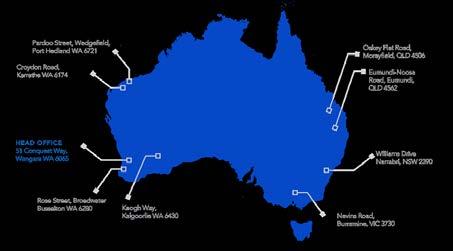

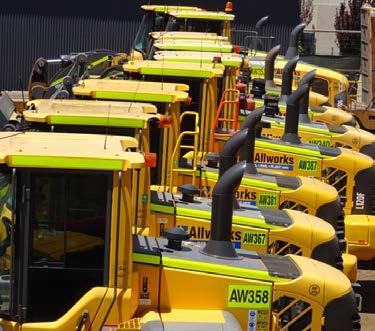




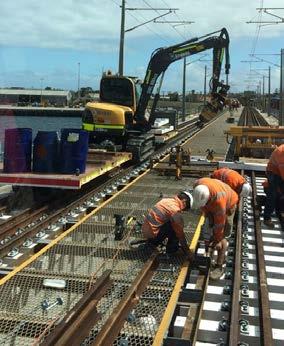



The Victorian opposition says it will axe the government’s $35 billion Suburban Rail Loop project if it wins the November state election.
Liberals leader Matthew Guy vowed instead to use the money for Victoria’s health system, which he says has been plagued by years of mismanagement and neglect.
He said the SRL was the most expensive yet least scrutinised project in Australia’s history.
As a first step, Guy has promised to put the stretch from Cheltenham to Box Hill in Melbourne’s east on ice.
“This November, Victorians face a clear choice. A choice between immediately rebuilding Victoria’s broken health system or a train line in 13 years’ time,” he said.
Early works worth about $2.3 billion were already budgeted for and signed off on for the rail loop, so the opposition wouldn’t rip up those contracts, he said.
“When the state can afford it, we might be able to build it but the key point is, what’s the priority now – you can’t do both,” he said.
“You can’t go and borrow tens of billions of dollars and rebuild the health service.”
In reply, Victorian Premier Dan Andrews said the opposition’s plan would cut 24,000 jobs.
“The Liberals will cut the SRL, meaning Cheltenham, Clayton, Monash, Glen Waverley, Burwood and Box Hill would never get the brand new train stations that are currently in early works,” he said.
“He will walk away from a train to Monash University, to Doncaster, to Deakin and La Trobe University, there will be no orbital rail to connect Melbourne’s suburbs.
“Just like Melbourne needed a city loop all those years ago – with discussions beginning in 1929 and construction completed in 1981 – our growing city now needs an orbital rail loop to give effect to the vision laid out in Plan Melbourne.
“The SRL – to be built in partnership with the Federal Government – is not just a rail line, it’s a network that connects Victoria’s fastest growing centres of jobs, tertiary education, major hospital and research centres and the airport.”
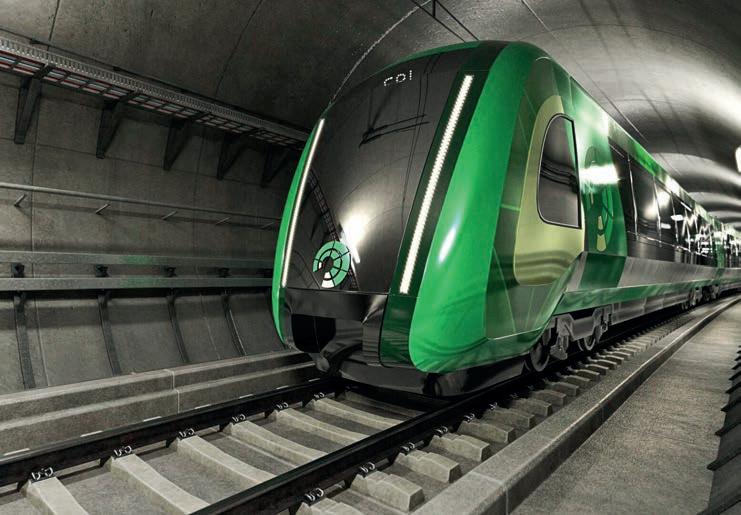
Andrews said Guy also threatened to scrap the state’s Big Build Program that currently supports 50,000 workers. He said level crossing removals, road upgrades and train line works would all be at risk under the Liberals.
“He’s walking away from the transport connections that these projects deliver, the jobs they offer and the wages that support Victorian families,” he said.
The 90km orbital SRL line will improve travel efficiency for more than 80 per cent of Melburnians.
scathing of the threat.
executive Adrian Dwyer said Victoria had to work hard to shed the baggage of ripping up the East West Link contract, but the speculation on the SRL risked the re-emergence of the “big dollars, no diggers” approach to infrastructure.
“This is infrastructure policy in Dire Straits, it’s Money for Nothing,” he said.
“Certainty is crucial in infrastructure, with major projects spanning a decade, and programs often multiple decades; we can’t afford to signal to global markets that every election will see the map re-drawn.
“International bidders are lining up for major infrastructure bids in Australia at this very moment, it could be incredibly damaging to send a signal to board rooms in Madrid and Rome and Kuala Lumpur that the Victorian infrastructure pipeline is a moving feast.
“Cancelling the existing SRL contracts now will be double the cost of cancelling the East West Link and deliver exactly the same amount of infrastructure – zero.”
Australasian Railways Association chief executive officer Caroline Wilkie said the construction and delivery of the SRL would create a long-term pipeline of work, generate thousands of local jobs and help train the next generation of skilled workers in Victoria.

“The rail industry needs certainty to attract and retain skilled workers to support the successful delivery of transformational projects like the SRL,” she said.
“Having a clear pipeline of upcoming projects is vital, particularly with the significant number of major infrastructure projects underway or planned across the country.
“Stopping a key project like this when early works have already started would set a
worrying precedent that could see industry and Victoria’s skilled workers look to other states in
transformational project for Victoria’s public transport system, which will deliver enormous social, environmental and jobs creation benefits for all Victorians.
“Once complete, the 90km orbital rail line is projected to improve travel efficiency for more than 80 per cent of Melburnians,” she said.
“This will take 600,000 cars off the road each day and slash travel times for the people of Melbourne and its regional centres, making it easier for them to get to work, education and essential services.”
Meanwhile, Monash University said it supported the current SRL project, which it had been working on with the Victorian Government, and viewed it as the best possible solution for the Monash community, its partners in the Monash Technology Precinct and broader South East community.
In a statement, it said it had been advocating for and promised by various governments (both state and federal) an efficient and effective public transport rail network since the University was established in the 1960s.
As part of SRL East, a new station at Monash will connect more people to Melbourne’s largest employment and innovation hub outside the CBD – providing students, employees and visitors with a direct train connection to the area for the first time.
The university said as the largest employment node outside of the CBD, the Monash Precinct was one of Victoria’s most important ‘engines’ of innovation, employment generation and skills development. Currently, 30,500 people are employed in the region and this is forecast to grow to 162,000 by 2056.


Victoria
Works to move more freight onto rail and take more trucks off local roads in Melbourne’s south-east have progressed, as part of the Port Rail Shuttle Network (PRSN) project.

Crews have completed laying the track of a new rail connection, enabling freight to be transported more efficiently from Dandenong South to the Port of Melbourne.
The connection – known as a spur line –will also link the Cranbourne line to a new intermodal freight terminal to be constructed
delivered as part of the PRSN, this will result in lower transport costs for businesses and take thousands of trucks off arterial and suburban roads.
The Australian Government is contributing $38 million towards this project and the Victorian Government $20 million.
Direct rail connections will be provided from the Port of Melbourne to major freight hubs in metropolitan Melbourne in the south-east, north and west.
while construction at the Austrak terminal in Somerton is scheduled to take place later this year.
Once complete, PRSN will slash truck movements on suburban roads by up to 175,000 trips each year and cut freight transport costs by up to 10 per cent.
The work at Dandenong South is being delivered by the Level Crossing Removal Project as part of the $1 billion Cranbourne Line Upgrade.
Passengers on the Cranbourne line are also benefiting from completed track duplication, which has increased train services to every 10 minutes in the morning peak.
Federal Infrastructure, Transport and Regional Development minister Catherine King said the Port Rail Shuttle Network would not only enhance the strategic importance of freight and logistics operators, but also deliver efficiencies and cost-savings for businesses.
The Port Rail Shuttle Network will enhance the strategic importance of freight and logistics operators.
“The Australian Governent’s $38 million investment in this project will enable producers and operators to transport their product more efficiently, boost the economy and reduce congestion on the road network,” she said.
Metro Trains recently recruited its 500th female driver – a first in Australia – as part of an ongoing push by the Victorian Government to boost the number of women working in transport.
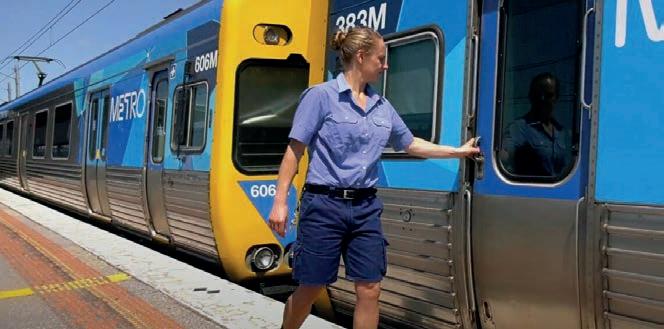
Women now make up 37 percent of the nearly 1400 qualified and trainee train drivers, the biggest pool in Metro Trains’ history.
In 2009, there were just 26 women driving trains for Metro. But a recent Metro Trains’ recruitment drive was made up of 84 per cent women.
Women are traditionally under-represented in the transport and transport construction industry. The Government has committed $6.25 million to its Women in Transport Program, which aims to increase the number of women working across transport by 30 per cent by the end of 2024, the number of women in senior roles in the public sector to 50 per cent and the private transport sector to 30 per cent.
The program includes 21 initiatives to attract and retain women in the transport
sector, including training programs for women heavy vehicle drivers, diesel mechanics scholarships, a leadership development scholarship program and an engineering pathway program for female refugee and asylum seekers.
The strategy involves public and private entities – the Department of Transpot, Major Transport infrastructure Authority and major transport project organisers, VicTrack, MTM, Yarra Tram, V/Line and bus operators.

In the year ending December 2021, up to 2000 more women joined the transport industry compared to June 2019 – including an increase of more than 1200 women in senior leadership positions across the public sector and transport operators.
Metro has been endorsed by global jobs network Work180 as an employer of choice for women. It screens employers against a set of criteria that demonstrates that the organisation is committed to diversity, equality and inclusion.
Women now make up 37 per cent of the train drivers for Metro Trains.
Metro chief executive officer Raymond O’Flaherty said train driving was an important job opportunity offering flexibility and career progression and urged people interested in finding out more to do so.
“We want our team to reflect the community that we serve. This means committing to a more diverse and inclusive workplace,” he said.

It’s all systems go for Perth’s $1.86 billion METRONET Forrestfield-Airport Link, which began operations on October 9.
The METRONET Forrestfield-Airport Link, now known as the Airport Line, is jointly funded by the Australian and Western Australian Governments, and is the first passenger rail line to Perth Airport.
The project delivered three new train stations at Redcliffe, Airport Central and High Wycombe, increasing public transport options for Perth’s eastern suburbs and foothills area.
This will support domestic and international tourism by improving access between the city and Perth Airport, and create new residential and commercial opportunities around Redcliffe and High Wycombe Stations.
It’s anticipated an average of 20,000 passenger trips will be made each day on the new rail line in its first year of service, increasing to 29,000 by 2032.
The Airport Line will be supported by an enhanced bus network connecting surrounding suburbs to the new train stations, adding an additional 26 new buses to the network, as well as approximately 1.7 million annual bus service kilometres to the Transperth network.
Prime Minister Anthony Albanese said the Federal Government was partnering with the WA Government to deliver billions of dollars
of upgrades and improvements to road and rail projects around the state, creating and supporting thousands of local jobs.

“As a former Infrastructure Minister, I know how important access to affordable and accessible public transport is and I’m really pleased this important METRONET project will start operating later this year,” he said.
“I look forward to visiting Perth and riding on the new Forrestfield-Airport Link later this year.”
WA Transport, Planning and Ports minister Rita Saffioti said the Forrestfield-Airport
Link had been one of the biggest and most complex public transport infrastructure projects the state had ever undertaken, including the delivery of an 8.5 kilometre rail tunnel that travels underneath the Swan River.


“We expect in the first year of service, we will see around 20,000 passenger movements everyday on the rail line, which will increase public transport options for Perth’s eastern suburbs and foothills area, as well as for visitors and residents going to and from the airport,” she said.
Arc Infrastructure’s Mid West Track and Structures teams recently completed the rebuild of ‘Sandy Curve’, a section of track approaching the town of Walkaway in Western Australia, and replaced the ageing Walkaway Bridge over a five-day shutdown.

‘Sandy Curve’ and the Walkaway Bridge are located on the Millendon Junction to Narngulu rail line, which is used to transport grain through the Mid West.
The team worked on a tight schedule to carry out the works and ensure the 730 metre section of track and bridge could reopen to customers as quickly as possible.
Located within the bounds of an Aboriginal Heritage area, the bridge works had required special approvals from the Yamatji Southern Regional Corporation as
well as the Department of Planning, Lands and Heritage. Works were conducted in two phases, and required a significant number of large machinery.
Phase one preliminary works commenced prior to the shutdown, and included earth works and equipment mobilisation.
With the approvals and pre-works complete, the shutdown and work on phase two got underway. The works included removal and repairs to the track and the bridge installation.
Regional Lead Mid West Trevor Blackmore said the work was made possible through organisation and teamwork.
“To have zero incidents and injuries with the amount of large plant operating in such a confined area is a credit to all involved,” he said.





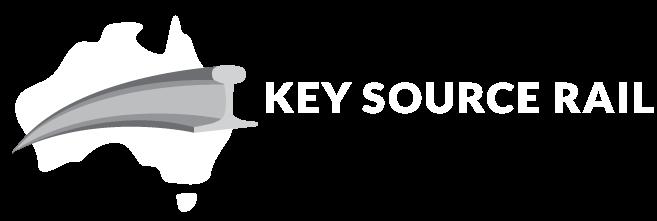

Queensland
With the Cross River Rail project charging ahead to completion, the Queensland Government recently released its blueprint for how the South East Queensland rail network would be transformed as a result.
Transport and Main Roads Minister Mark Bailey said the SE Queensland Rail Connect plan showed just how trains would move when Cross River Rail opened.
“The Government has been carefully and progressively making the sorts of investments in rail that will completely transform the way we travel throughout the South East of this state,” he said.
“In 2025, the first underground rail system in the state’s history will be built paving the way for faster, more frequent services, but we aren’t just building Cross River Rail, we’re building a brand new network.
“This network will be a change for Queenslanders, but it will open the door for future investment and timesaving timetable changes to help Queenslanders get home sooner and safer.
“The rail connect plan is headlined by projects like the Beerburrum to Nambour and Kuraby to Beenleigh track duplications, Gold Coast Light Rail stage three, station upgrades across all of Queensland, plus the manufacture of 65 brand new trains in Maryborough.
“Bringing all of these projects together is a new modern signalling system and implementation of state-of-the-art platform screen doors for underground stations, a world leading technology used on the subway networks of Europe and Singapore, which will allow us to run more services, more often, all while improving safety.”
Bailey said the new plan would open up new public transport opportunities for many residents and visitors to SE Queensland by establishing a new three-sector network.
Sector One will create a north-south spine connecting the northern and southern regions through the Cross River Rail tunnel from Varsity Lakes and Beenleigh to Redcliffe Peninsula and Nambour.
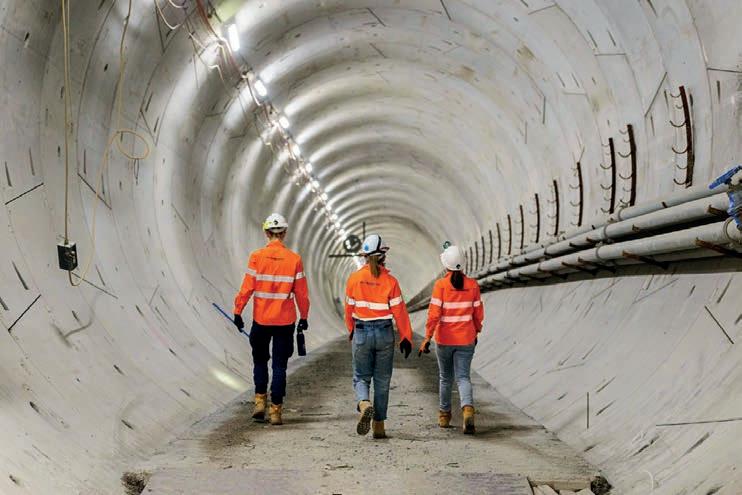
Sector Two will comprise services from Rosewood, Ipswich and Springfield through Central to Doomben, the Airport and Shorncliffe, while Sector Three will operate from Ferny Grove through Central and Southbank to Cleveland.
All trains will run through Roma Street either through the existing station or the new below ground Cross River Rail station.
“This will be a big change for some
The rail connect network is split into three sectors.
customers, but presents many opportunities especially when considering the sheer level of investment and good jobs that will be supported,” Bailey said.
“Cross River Rail is already supporting more than 1700 Queensland subcontractors and will support 7700 jobs over the life of the project, while the Queensland-made Train Manufacturing Program and rollout of the European Train Control System will support thousands of jobs over the life of the programs.
“There’s nothing that helps Queenslanders tackle the cost of living more than having a strong pipeline of work on Queensland soil.”
Bailey said the rail transformation underway across Queensland would deliver for all commuters.
“More than 80,000 people migrated to Queensland in the past two years, and this investment shows we are at full throttle, planning, building and delivering a world-class rail network for the state,” he said.
“Our rail revolution is all about building for growth and providing a legacy of infrastructure for generations of Queenslanders to come.
“The new network we build now will be the network Queensland kids and Olympic-goers will remember.
“Our four-year road and transport plan includes $7.154 billion in funding towards this ambitious near $20 billion pipeline and we’re proud to be investing in the network at record levels. On top of this, the Government is fully funding the $5.4 billion Cross River Rail project.
“The pipeline includes major projects like this, as well as those in the planning phase
like the Direct Sunshine Coast line (formerly CAMCOS), Springfield to Ipswich and Salisbury to Beaudesert.”
Queensland’s rail pipeline includes:
• $5.4 billion Cross River Rail

• $7.1 billion Queensland Train Manufacturing Program (including Ormeau stabling and maintenance facility)
• $2.6 billion Logan and Gold Coast Faster Rail Project to upgrade tracks and stations between Kuraby and Beenleigh
• $1.2 billion Gold Coast Light Rail stage three
• $764.3 million European Train Control System rollout
• $275.7 million for Automatic Train Operation and Platform Screen Door fitment on New Generation Rollingstock
• $550.8 million Beerburrum to Nambour upgrade (stage 1)
• Over $500 million South East Queensland Station Accessibility Upgrades Program
• $360 million Park n Ride upgrade program
• $374.1 million European Train Control System train fitment
• $20 million Salisbury to Beaudesert business case
• $15 million Brisbane to Toowoomba passenger rail business case
• $6 million Direct Sunshine Coast line planning study
• $2.5 million Springfield to Ipswich rail corridor study
• $371.1 million smar t ticketing.
To view the plan, visit https://www.tmr.qld.gov.au/ About-us/Corporate-information/Publications/
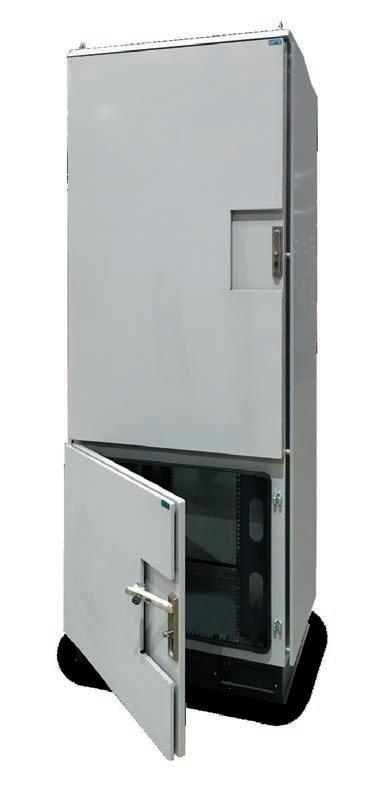
Ipswich/Rosewood and Springfield train line customers are now able to use credit cards and smart devices to take the train as the rollout of the Queensland Government’s $371 million Smart Ticketing project ramps up.
Once fully rolled out, the system will cover the largest geographical area of any ticketing system in the world, and be able to adapt to future growth and technology.

The system will allow commuters to tap onto buses, trains, trams and Translinksupported ferries using contactless debit and credit cards, smartphones and smart watches.
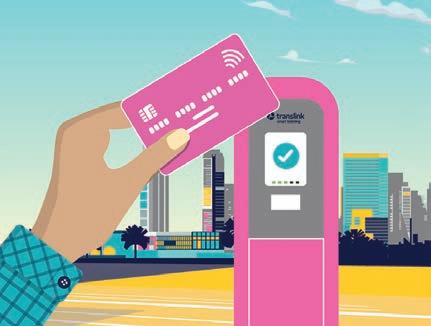
Full fare paying customers travelling between Rosewood and Central, and Springfield and Central, can tap on at the start and off at the end of their journey using Smart Ticketing equipment with Visa, Mastercard or American Express contactless debit or credit cards, or smart devices such as phones and watches.
The program also recognised Queensland’s First Nations’ history.
The Smart Ticketing readers and gates are colourfully wrapped in the iconic First Nation’s Connecting Thread artwork, and include larger, brighter and clearer screens, sounds and messages – making it easier for users to stay on top of their taps.
Member for Mount Ommaney Jess Pugh said the progressive testing and trial periods made sure customers had the best experience possible when transitioning to the new system.
“Queensland’s iconic go card has been used to pay for transport for about 16 years so the new system will be a big shake up to how people plan, catch and pay for services, not just here in Brisbane but right across the state,” she said.
“We’re focused on giving Queenslanders a new product that is fit for purpose and easy to use, so it’s important we take this time to progressively trial the system.
“With each tap, we are moving Queensland into the future.”
Customers can only pay for their journey, and if they are travelling with family or friends, everyone will need to use their own contactless debit or credit card or smart device to tap on and tap off.
South Wales
The final track has officially been laid on the NSW Government’s flagship public transport development, the Sydney Metro City and Southwest project.
Premier Dominic Perrottet and Minister for Transport, Veterans and Western Sydney David Elliott visited Martin Place Station and secured the final piece of track into place, marking the completion of trackwork in the 15.5 kilometre twin tunnels between Chatswood and Sydenham.
Perrottet said the project would slash travel times for commuters and transform the way
beneath the CBD at Martin Place, Pitt Street Waterloo and Barangaroo,” he said.
Elliott said the new metro railway line would have a target capacity of 40,000 customers per hour, similar to other metro systems worldwide.
“Sydney Metro trains will make history as we complete the first railway crossing deep below Sydney Harbour, with the trip between Victoria Cross in the city’s north to Barangaroo a fast three-minute journey,” he said.

“Furthermore, this has been a boost for the economy and local jobs with more than 5000 people currently working on the City
Station has seen all platform screen doors installed on station platforms and finishes are now underway.
A new 65m-long pedestrian link tunnel is also complete. It will provide the public with all-weather access to areas and alternative transport connections around the station and also link directly to Hunter Street and to the future Sydney Metro Hunter Street Station.
The two new commercial buildings at the station – a 39-storey building above the northern entrance to the station and a 28-storey office building above the southern entrance –are rising rapidly, reaching a new level every one to two weeks.
More than 40,000 cubic metres of concrete – enough to fill more than 16 Olympic swimming pools – was used to embed about 45,000 sleepers which supported 62km of Australian steel rails with a combined weight of about 4000t.
Now track laying is complete, workers are using railway wagons, fitted with large cable drums, to roll out the hundreds of kilometres of high voltage power cables needed to energise the driverless metro trains.
Workers rolling out the high voltage power cables needed to energise the driverless metro trains.
Connection of the new Sydney Metro City and Southwest Line with the existing Metro North West Line will occur later this year, ready for train testing to start along the new alignment in 2023 ahead of passenger services starting in 2024.
New South Wales Premier Dominic Perrottet has handed down an angry ultimatum to the Rail, Tram and Bus Union over its campaign of industrial strikes which continued to cripple the Sydney rail transport system.
The last straw came a month ago when Sydney ground to a halt once again, after 70 per cent of the city’s train fleet did not run because of more stopwork action.
To compound matters, bus drivers walked off the job in a separate protest, which led to a heavy backlog on the roads due to the higherthan-usual traffic congestion.
Trains were forced to operate to a reduced timetable for majority of the network, as negotiations over a new enterprise agreement fail to achieve resolution.
As well, the RTBU separately wants
the government to agree to make safety amendments to a fleet of intercity trains.
The Waratah, Millennium, and OSCAR trains were affected, while RTBU members said they would consider refusing to run services if they believe trains did not meet a minimum maintenance or cleanliness standard.
Perrottet said he had enough.
“I will not have our city grind to a halt, our people inconvenienced anymore by the actions of a union movement that belongs back in the 1970s,” he said.
“I have instructed the Transport Minister to finalise all negotiations with the RTBU. That will then go to a vote.
“If there is any further industrial action until that enterprise agreement has been voted on, we immediately seek to terminate the current
agreement and we will remove the new InterCity fleet from that agreement.
“We’ll have the new agreement arbitrated by the Fair Work Commission and that will be resolved in that manner.”
RTBU NSW branch secretary Alex Claassens said while the NSW Government had agreed to rectify the safety issues on the new fleet, the union needed to “see the complete package and commitment in writing and discuss it with members before any action can be called off”.
“This isn’t the first time the NSW Government has promised it will fix the safety issues. Rail workers and commuters have been burnt too many times to believe what one Minister in one meeting says,” he said.
As Rail Express went to print, there was still no breakthrough in the impasse.
The NSW Government’s historic Rail Trails Bill has passed through Parliament, empowering regional communities to convert disused rail corridors into walking and riding tracks.
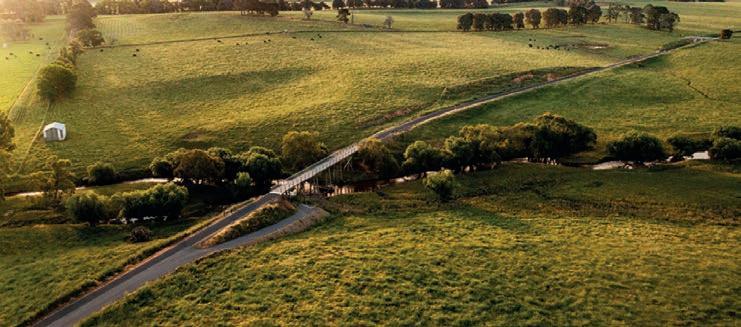
The Transport Administration Amendment (Rail Trails) Bill 2022 alters the Transport Administration Act 1988 to provide a streamlined process that may enable regional rail trails where and when the community wants them.
Cities and Active Transport minister Rob Stokes said the Bill unlocks opportunities for communities and fixes outdated and onerous legislation that required a change to the Act for each rail trail.
“This bill will allow regional councils to transform these spaces into treasured public places. Projects that are consistent with the Rail Trail Framework and have broad community support will now be able to proceed,” he said.
“We know that active transport options are great for our wellbeing, our environment and give locals and visitors a way to explore the beauty that regional NSW has to offer, free of charge.”
Regional Transport and Roads minister Sam Farraway said an improved process to authorise the use of non-operational rail lines for rail trails and related tourism uses will benefit rural communities and economies, without compromising on biosecurity or ongoing viability.
“The Government’s approach makes the process for rail trail development more
rigorous and transparent; this is not a green light for all disused rail corridors to become a rail trail,” he said.
“State-funded pilot projects have proved popular and beneficial — the first completed rail trail between Tumbarumba and Rosewood saw spend in the local economy increase 20 per cent following its opening in mid-2020.
“The $4.9 million project has had over 15,000 visits so far and welcome economic stimulus from this has flowed to Snowy Valley businesses.
“We’ve also invested $7.8 million in the Northern Rivers Rail Trail, which is expected to create an extra 200 jobs and attract 82,000 visitors each year in and around the Tweed communities of Murwillumbah to Crabbes Creek.”
All rail trails would be created under a lease agreement of up to 30 years with the local council.
The agreement allows the Minister to
terminate the lease should the corridor be required for a future transport use.
However, the move continues to anger the Northern Railways Defenders Forum, which has been steadfastly against the legislation.
Spokesmen Siri Gamage and Mathew Tierney said as the country faced higher fuel prices, and with a need to commit to climate change targets, it is the wrong time to be alienating railway lines from their original purposes.
“We are not against rail trails per se, just ones that can be done by ministerial fiat, despite the real opportunities that we are currently exploring,” they said.
“Let’s instead see a full review of the non-used but still open railway lines to see what purposes they can and should be put to as functional railway lines.
“These rail lines need to be incorporated into short, medium and long-term transport planning for the restoration of an efficient and effective non-metropolitan rail alternative.”
The largest project in the New South Wales Fixing Country Rail Program is officially complete.
Regional Transport and Roads minister Sam Farraway said 174 kilometres of rail between Junee and Griffith have been replaced, while a $11.7 million project is about to get under way near Coolamon to further reduce rail bottlenecks on the line.
“Fixing Country Rail is a $400 million program unlocking the economic potential of regional NSW,” he said. “Our regional freight task in NSW is expected to increase by 17 per cent to 311 million tonnes by 2036, which is why improving our supply chain network, whether it be rail or roads, is so important.
“The Junee to Griffith upgrade allows heavier freight trains to use the track, and adds capacity for those trains to travel at higher speeds, making journeys more efficient for freight trains transporting goods and produce from farms in the Riverina across the state, Australia and overseas.”
The project to extend the Coolamon Siding will help alleviate bottlenecks and congestion on the single line track between Junee and Griffith, where currently there are limited opportunities for freight trains to load and unload off the main line.
“It will allow access for modern freight trains up to 1500 metres long to exit the
main line, letting passenger and other freight services pass while the train is loading or unloading,” Farraway said.
“The Riverina is the largest agricultural producer in regional NSW, and this rail upgrade will increase bulk grain loading capability for freight trains.”
Member for Cootamundra Steph Cooke said the Coolamon project would support around 30 jobs during construction.
“The Riverina Murray region makes the largest regional contribution to agricultural production across NSW, accounting for almost 13 per cent of produce across the state,” she said.
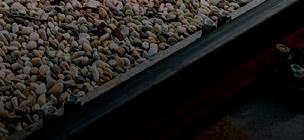

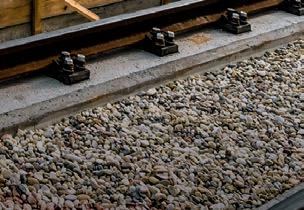
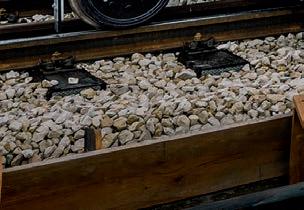
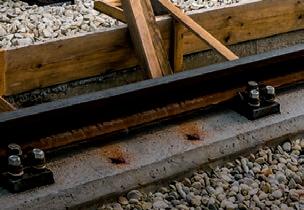

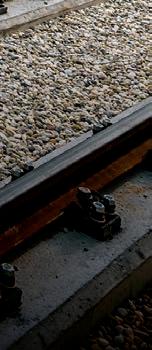
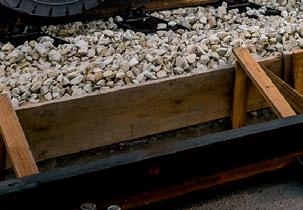

In the dead of night, a train slowly makes it way between two suburban stations on Brisbane’s Shorncliffe line.
When the suburban multiple unit (SMU) – a stalwart of the QR’s Citytrain fleet – reaches Sandgate station, it sits at the platform for a while as hi-vis-clad workers conduct their checks.
It then makes its way just as slowly back to Shorncliffe station.
The same train repeats the same pattern over eight nights, completing 50 runs in total between the same two stations.
To the untrained eye, the monotonous back and forth might not seem like anything special at all.
But to those involved, the exercise was a huge milestone in modernising Queensland’s
rail network through the introduction of worldclass European Train Control System (ETCS) digital signalling technology.
The train in question – an SMU276 – is the first-of-class of a number of SMUs being fitted out with ETCS technology.
The vital work is being delivered through the Cross River Rail project – the new 10.2 kilometre rail line from Dutton Park to Bowen Hills, which includes 5.9km of twin tunnels under the Brisbane River and CBD.
As Cross River Rail Delivery Authority chief executive officer Graeme Newton points out, the significance of the testing underway on that stretch of track between Shorncliffe and Sandgate throughout July and August could not be overstated.

“While Brisbane slept, the future was
arriving,” he said. “For the first time, an ETCSequipped train was tested in Level 2, or under ‘full supervision’, on the Queensland Rail network – a huge step in our state becoming the first to use an ETCS Level 2 system on a passenger network anywhere in Australia.”
Full supervision means ETCS was fully connected using both operational lineside and onboard signalling equipment, without relying on existing signalling conventions such as red or green lights on the side of the track.


Newton said trains had previously been tested in Level 0, where drivers onboard ETCS-equipped trains had to adhere to existing signalling conventions, but this new phase provided a wealth of new information.
“The team confirmed the onboard and trackside equipment were communicating
With Cross River Rail well into construction and a raft of other significant projects in the South Eastern Queensland rail network pipeline, the rollout of the world-class European Train Control System (ETCS) has never been more important.The console of an ETCS-equipped train.
with each other, and Queensland Rail’s Rail Management Centre, as expected,” he said.
“A number of minor issues were picked up during the testing and are being analysed further – which is the whole point of testing to begin with.
“This testing is continuing over coming months between Sandgate and Shorncliffe, and this will allow us to update the system and ensure any issues are resolved.”
Newton, like so many others involved in the project, is excited by what this new technology will bring.
“ETCS allows the train to know its location precisely, which in turn allows trains to safely be scheduled to travel closer together,” he said.
“Continuous information is relayed between the Rail Management Centre and trains via trackside equipment.
“This is crucial for the safe operation of trains within Cross River Rail’s tunnels, where this digital technology will be relied upon rather than conventional trackside signalling equipment such as coloured lights.”
Queensland Rail’s Head of SEQ, Scott Riedel, said the benefits would extend to the wider network.

“ETCS is the next step in the modernisation of our network,” he said.
“It will lead to improved network performance, increased network capacity and improved timetables.
“In fact, as part of the ETCS project, our Rail Management Centre at Bowen Hills will be modernised with a new rail traffic management system to move trains around the network with greater efficiency and updated train planning systems.”
Riedel believes one of the biggest ways ETCS will increase safety is by providing an engineering control for signals passed at danger (SPADs) on the network.

About 200 people are helping to make ETCS a reality in Queensland.
This includes at a specialised facility at Redbank, where the fleet of SMUs are being fitted out with ETCS equipment and undergoing testing; the Systems Integration Lab at Eagle Farm, where software is tested in a lab setting before it’s tested on the track; and along the Shorncliffe line, where trackside equipment including radio masts are being installed.
Newton said the various partners involved in ETCS works – the Delivery Authority, Queensland Rail, Hitachi Rail and the
Department of Transport and Main Roads – recently moved to a new alliance-style contract to deliver the project.
“The new alliance, known as Sequence, ensures close collaboration between the key partners, and is really the most effective model for delivering this game-changing project,” he said.
“ETCS is a complex project which has critical deadlines to provide signalling and other technology for Cross River Rail’s tunnels and to integrate with the existing Queensland Rail network.
“This model, which is successfully used on many large infrastructure projects with complex requirements, gives us the best chance for success.”
Newton said Shorncliffe line testing remains the team’s key focus for the time being.
“Testing is a complex, extensive process which needs to be carried out at night and on weekends, when revenue services aren’t running,” he said.
“We want to make sure we get this right, which is why ETCS will be rolled out in several stages, starting with the rigorous testing program on the Shorncliffe line, where construction work is already well advanced.
“All parts of the new signalling system will be progressively tested, including equipment installed on and along the track, onboard test trains and within the Rail Management Centre.”


Newton said focus would then shift to the design requirements and installation for Cross River Rail’s tunnels, which will rely on the new signalling technology to safely operate.
“This will ensure there is enough time for testing and commissioning and integration with other parts of the project before the twin tunnels open to services,” he said.
But with ETCS to deliver benefits beyond the transformational Cross River Rail project, exactly where the technology is rolled out next will depend on a number of factors, including network requirements, capacity and the asset life of existing signalling systems across the network.
The rollout of the new technology comes on the precipice of a huge investment in rail infrastructure in the state.
Cross River Rail is already well advanced, with tunnels and caverns excavated and new underground stations taking shape.
But prompting the introduction of ETCS and adding a second river crossing at the core of the rail network, Cross River Rail provides the capacity to increase train services as the population grows.
And with the Brisbane Olympic and Paralympic Games on the horizon, the megaproject also acts as a fix at the core of the network that makes a number of rail improvements across the whole of SEQ more viable.
It’s an opportunity not lost on Queensland’s Transport and Main Roads minister Mark Bailey.
“We’re not just building Cross River Rail, we’re building a new network,” he said.
“Our latest budget delivered a $6 billion pipeline of rail projects over the forward estimates, over and above Cross River Rail.
“These include Beerburrum to Nambour Stage One and Kuraby to Beenleigh (also known as Logan and Gold Coast Faster Rail) and Gold Coast light rail stage three.
“We’re building new or upgrading more than 30 stations across all of Queensland to improve accessibility to the network, and manufacturing 65 new train sets in Maryborough.
“That’s trains built in Queensland, by Queenslanders for Queenslanders.”
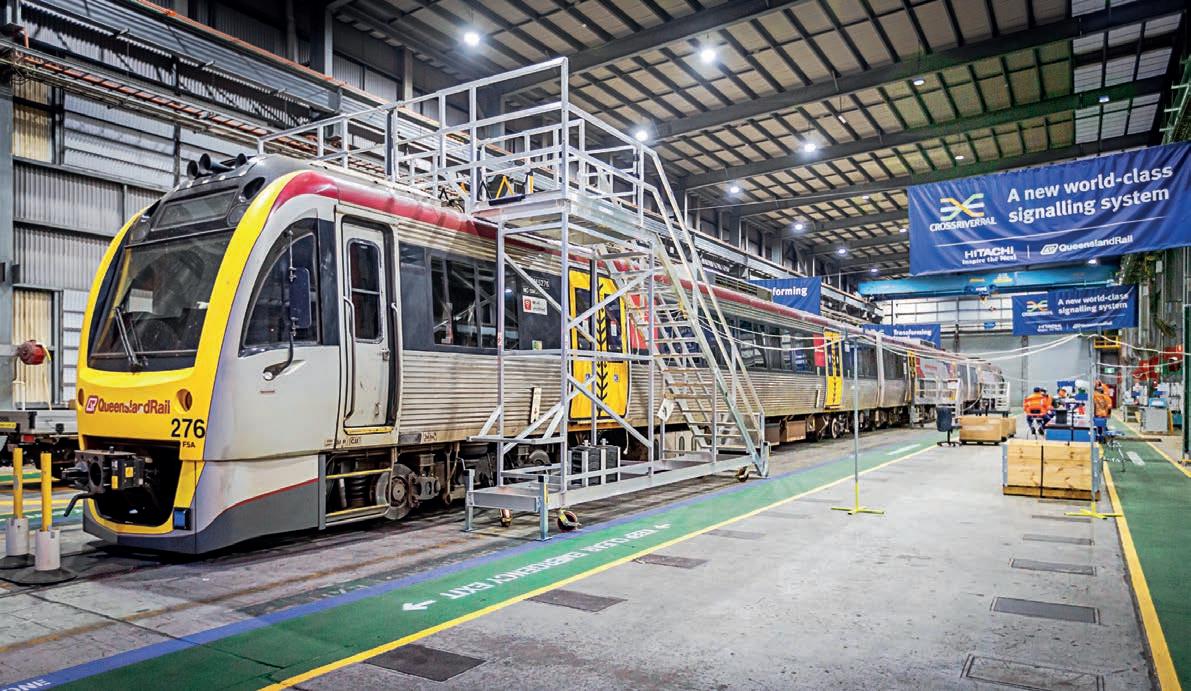
And at the heart of all of it is the ETCS.
“Bringing all these projects together is the rollout of ETCS technology – the world-leading system used across much of Europe, which will allow us to run more services, more often, all while improving safety,” Bailey said.
“This world-class technology is what will help us provide world-class public transport to service a world-class event during Brisbane 2032.
“It will also help provide the kind of public transport network the growing south east corner needs and deserves.”
So while that lonely train in the middle of
the night might be what ETCS looks like on the surface, the reality of what it will provide, and what it will enable, is so much more.
Like the Cross River Rail project itself, ETCS is just the beginning of Queensland’s rail revolution.
Welcome to the 2022 Rail Express Plant and Equipment Showcase, a useful resource highlighting the capabilities of some of the major plant and equipment suppliers to Australia and New Zealand’s railway construction and railway maintenance industries.
The showcase, over the next six pages, is an essential industry resource, demonstrating the skills and expertise of businesses involved in the sector.

Affective Rail www.affectiverail.com.au peter@affective.com.au(02) 4227 6222
Affective Rail www. affectiverail.com.au phil@affective.com.au0412573016
Allworks (WA) Pty Ltd www.allworks.com.au info@allworks.com.au(08) 9303 4368•
Alpha Rail www.alpharail.co.nz mark@alpharail.co.nz+64277785898•
Autech Rail Australia Pty Ltd www.autechrail.com.au a.bibby@autechrail.com.au0473598259

Bexon Crane Rail www.bexon.com.au bexon@bexon.com.au (02) 9522 9437
Diesel Traction Group www.dtg.co.nz secretary@dtg.co.nz
E Rail Trans Pty Ltd www.erailtrans.com sales@erailtrans.com(02) 8880 7661
Engineered Solutions Asia Pacific P/Lwww.esap.net.au/ xipengj@esap.net.au0409281159
Engineering Supplies www.engineeringsupplies.com.au/ jeremy@engsup.com.au0437919313
Ironcore Transformers Pty. Ltd., www.ironcore.com.au info@ironcore.com.au(03) 9480 6044
Laing O’Rourke www.laingorourke.com/ rbarker@laingorourke. com.au 0419564747 • • •
Liebherr-Australia www.liebherr.com.au elle.nguyen@liebherr.com(02) 9852 1866•
Loram www.loram.com.au enquiriespty@loram. com.au 1800 059 955
Luke Penrith Arts & Designs www.lukepenrithartsanddesigns. com/ admin@ lukepenrithartsanddesigns. com 0419220635
Lyons Machine Hire Pty Ltd rhonstud@bigpond.net.au0418187475
Martinus www.Martinus.com.au billie.stanic@martinus. com.au 0424274963
McLeod Rail www.mcleodrail.com.au admin@mcleodrail.com.au(03) 9687 3955•
Civil Pty Ltd www.newbridgecivil.com.au markr@newbridgecivil. com.au
www.pandrol.com salesaus@pandrol.com(02) 9852 2500
Rail Services www.railtrain.com.au/service-list/ rmc-track-and-civil/
3557 6054
•

Affective Rail www.affectiverail.com.au peter@affective.com.au(02) 4227 6222
Affective Rail www.affectiverail.com.au phil@affective.com.au0412573016
Allworks www.allworks.com.au info@allworks.com.au(08) 9303 4368•
Allworks (WA) Pty Ltd www.allworks.com.au info@allworks.com.au(08) 9303 4368
Alpha Rail www.alpharail.co.nz mark@alpharail.co.nz+64277785898•
Autech Rail Australia Pty Ltd www.autechrail.com.au a.bibby@autechrail.com.au0473598259
CRRC Australia Pty Ltd www.CRRCGC.CC yangbin1818@gmail.com0488043786
Diesel Traction Group www.dtg.co.nz secretary@dtg.co.nz
Engineering Supplies www.engineeringsupplies.com.au/ jeremy@engsup.com.au0437919313
Freightquip www.freightquip.com andrew.steel@freightquip. com 0413156708
Keltbray International Pty Limited www.keltbray.com/ mark.thomas@ keltbrayinternational.com 0448802804 •
Kennards Hire www.kennards.com.au brettharvey@kennards. com.au 0428026670 •
Laing O’Rourke www.laingorourke.com/ rbarker@laingorourke. com.au 0419564747 •
Liebherr-Australia www.liebherr.com.au elle.nguyen@liebherr.com(02) 9852 1866
Loram www.loram.com.au enquiriespty@loram. com.au 1800 059 955
Lyons Machine Hire Pty Ltd rhonstud@bigpond.net.au0418187475
Martinus www.Martinus.com.au billie.stanic@martinus. com.au 0424274963
MATISA www.matisa.com.au steven.johnson@matisa. com.au 0429153530
Melvelle Equipment www.melvelle.com.au sales@melvelle.com.au(02) 4951 5244•
Melvelle Equipment Corp Pty Ltdwww.melvelle.com.au sales@melvelle.com.au(02) 49515244
Pandrol www.pandrol.com salesaus@pandrol.com(02) 9852 2500•
Rail Equipment Australia www.railequipmentaustralia.com.au sales@ railequipmentaustralia. com.au

Schaffler Consulting www.schaeffler.com/en/divisionsproducts/consulting/ bernard.schaffler01@ gmail.com
TechPlas Extrusions www.TechPlas.com.au Enquiries@techplas.com.au(02) 9636 6755
THEE group www.theegroups.com.au jthompson@theegroups. com.au
Titan Rail www.titanrail.co.nz steve@titanrail.co.nz+64277045527 webbair pty ltd www.webbair.com.au chris@webbair.com.au0419568976
• •

Affective Rail www.affectiverail.com.au peter@affective.com.au (02) 4227 6222
Allworks www.allworks.com.au info@allworks.com.au (08) 9303 4368
Allworks (WA) Pty Ltd www.allworks.com.au info@allworks.com.au (08) 9303 4368
Alpha Rail www.alpharail.co.nz mark@alpharail.co.nz +64277785898

Bexon Crane Rail www.bexon.com.au bexon@bexon.com.au (02) 9522 9437
Calgraphics www.calgraphics.com.au/ wayne@calgraphics.com.au0400549216
CRRC Australia Pty Ltd www.CRRCGC.CC yangbin1818@gmail.com0488043786
Diesel Traction Group www.dtg.co.nz secretary@dtg.co.nz
Engineered Solutions Asia Pacific P/Lwww.esap.net.au/ xipengj@esap.net.au 0409281159
Engineering Supplies www.engineeringsupplies.com.au/ jeremy@engsup.com.au 0437919313
Ironcore Transformers Pty. Ltd., www.ironcore.com.au info@ironcore.com.au 0394806044
JU Design Pty Ltd www.judesign.com.au jill@judesign.com.au 0400123852
Keltbray International Pty Limited www.keltbray.com/ mark.thomas@ keltbrayinternational.com 0448802804
Kennards Hire www.kennards.com.au brettharvey@kennards.com.au0428026670
Laing O’Rourke www.laingorourke.com/ rbarker@laingorourke.com.au0419564747
• Loram www.loram.com.au enquiriespty@loram.com.au1800 059 955
Lyons Machine Hire Pty Ltd rhonstud@bigpond.net.au0418187475
Martinus www.Martinus.com.au billie.stanic@martinus.com.au0424274963
• MATISA www.matisa.com.au steven.johnson@matisa.com.au0429153530
McLeod Rail www.mcleodrail.com.au admin@mcleodrail.com.au(03) 9687 3955
Melvelle Equipment www.melvelle.com.au sales@melvelle.com.au (02) 4951 5244
Melvelle Equipment Corp Pty Ltdwww.melvelle.com.au sales@melvelle.com.au (02) 4951 5244
Newbridge Civil Pty Ltd www.newbridgecivil.com.au markr@newbridgecivil.com.au0487431571
www.pandrol.com
and-civil/


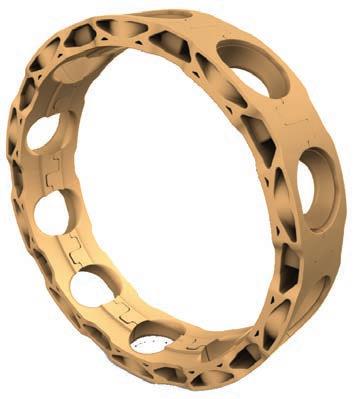
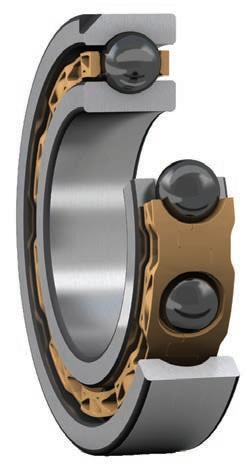

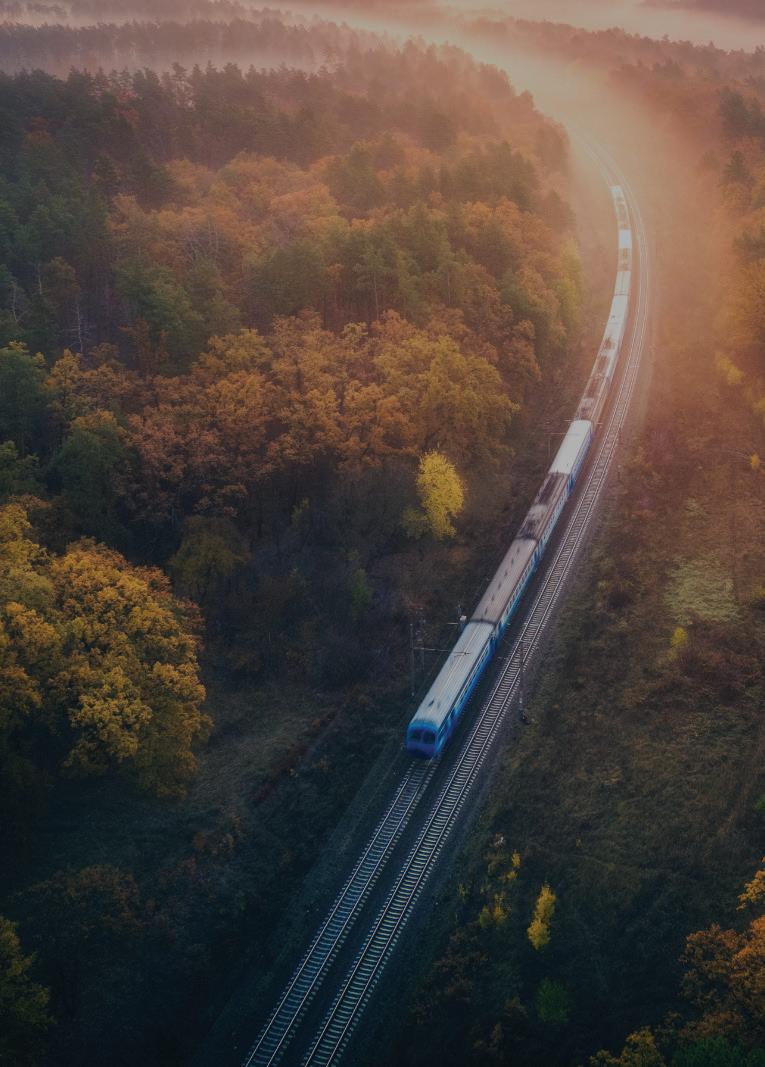
In the rail industry, wheeled excavators are most commonly used for classic earthmoving work. The mobility of such wheeled machines is a great advantage over those with tracked undercarriages as they are not restricted from hard stand areas of concrete and asphalt.
Across Australia, Liebherr’s A 922 and A 924 Rail Litronic excavators are employed in various rail infrastructure building and maintenance jobs.
The 120 kW/163 HP engine of the A 922 Rail Litronic ensures it achieves high working speeds with the Litronic’s renowned fluid equipment movement. The A 922 Rail is suitable for use on railway tracks and for road construction, and is fast thanks to the mobile undercarriage.
The innovative hydraulic concept of the model consists of a Liebherr variable displacement double pump with independent control circuits. High-performance, hydraulic attachments can thus be operated independently of the working and travel movements of the railroad excavator.
The heavy ballast was also redesigned to yield the best bearing load values with improved weight distribution and a more compact rear dimension of 2000mm.
The A 922’s unique double cab featuring standard rollover protective structure (ROPS) and a modern interior design offers the best conditions for comfortable, productive and safe operation. To improve productivity by up to 30 per cent, the rail road excavators can be fitted with a fully hydraulic quick coupling system developed by Liebherr.
The A 924 Rail Litronic model combines strong performance with a high level of economy.
Running on a 120kW/163HP at 1900rpm machine engine, it delivers higher working speeds and smooth operation. The powerful D924 diesel engine is environmentally friendly thanks to its reduced fuel consumption and emissions..
Combining power and dynamic properties, this all-rounder machine is the efficient solution for safe use on all rail projects as well as construction sites which require stable power, strength, and
precision to deliver higher productivity and mobile flexibility.
Both the A 922 and A 924 are designed with the operator in mind. The double cab provides user friendliness and comfort, with vision of the working area supported by a generous use of glass as well as rear and side cameras as standard and ensuring safe operation at all times.
The touchscreen colour display as well as the other control elements on the console and the comfort operator’s seat are ideally and ergonomically coordinated with each other, forming a perfect unit. The service-oriented design of the Liebherr excavators guarantees short maintenance times and minimises the associated costs.
The excavators play a big part in works run by the Anric Group, an acknowledged industry leader in Hi Rail technology, rail construction, civil works and plant hire.
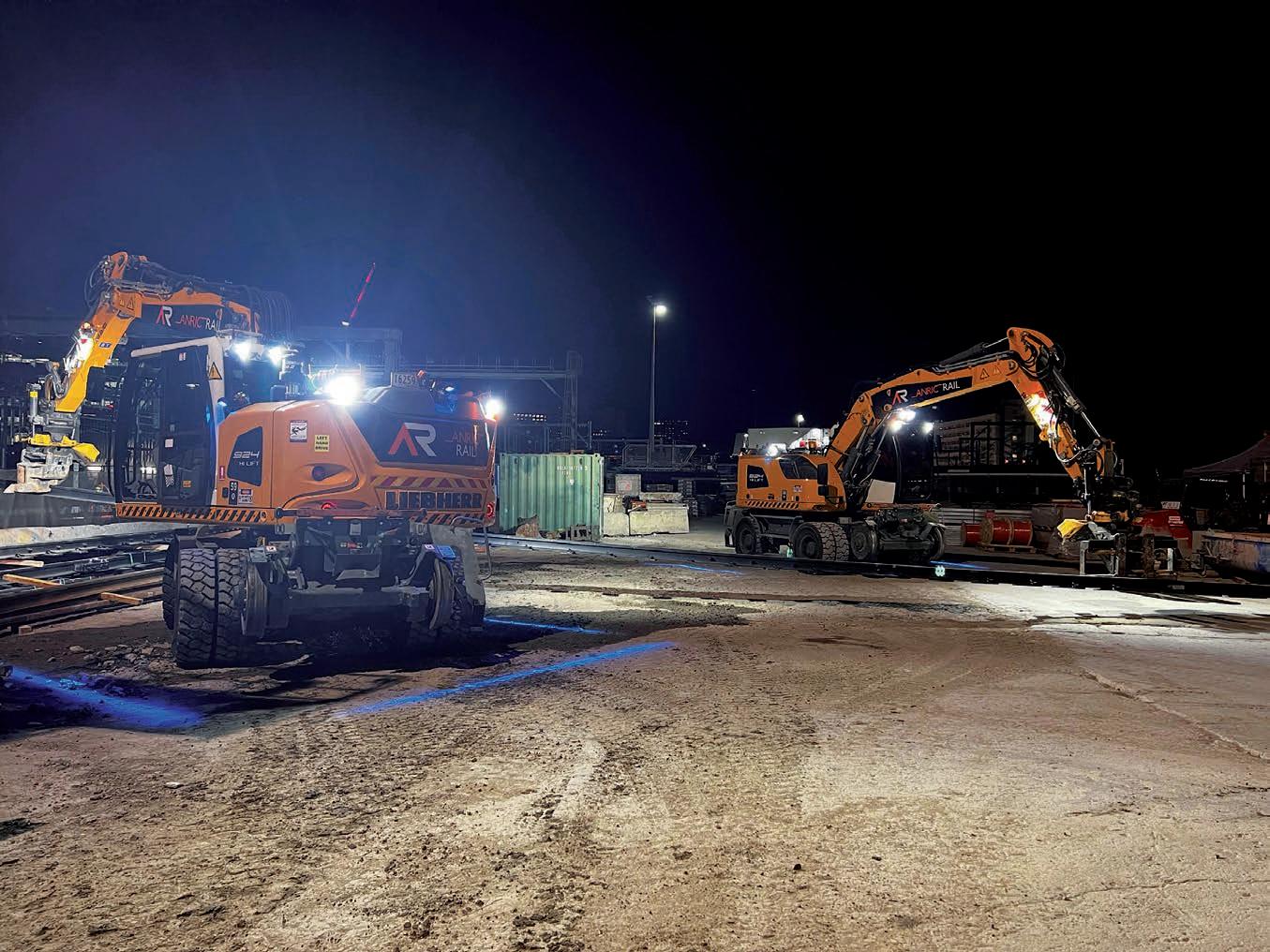
With projects across NSW, the business has been delivering cost-efficient and innovative civil and rail business practices for more than 40 years.
As Anric Group operations manager Anthony Spinozzi tells Rail Express, the only way to deliver superior results is through providing clients with international best practices combined with a reputable, driven and highly skilled team, backed by the best equipment.

And that includes the Liebherr rail excavators.
“We’re involved in a lot of maintenance works and construction projects, and we deliberately chose those machines for their efficiency and turnkey capabilities,” he said.
“The machines have many strong performance features in them apart from just lifting and handling. Traditionally a rail machine in Australia is piecemealed together, so that means users would have to purchase an OEM standard vehicle, and then have them accessorised, for example going to a
specialist to bolt on or fabricate the rail gear for that vehicle.
“And there are several other things to get done to a vehicle. The Liebherr rail-specific machines have everything on them already.”
Spinozzi said that also meant users were only dealing with one company if there were any problems or issues.
Anric bought the first Liebherr machine around 2018, and was so impressed it acquired a second one six months later. Now the fleet has expanded to six, all being used on a weekly basis on various projects around Sydney.
This includes carrying out work for Systems Connect, an unincorporated joint venture between CIMIC companies CPB Contractors and UGL Engineering, as well as the Sydenham to Bankstown Metro project, aimed at converting the 13.5km T3 line to metro standard. The group has also been contracted to build the line-wide work to convert excavated tunnels into a working railway for Sydney Metro City & Southwest.
Spinozzi said the company was more than satisfied with the actual performance of the Liebherr rail excavators.
“The excavating power is exceptional, the lifting system is smooth and runs well, as does the console computer system,” he said. “For example, it’s quite fast in recognising and calculating excavation numbers and putting the weights in so that the operator can tell quickly what’s happening to the machine and how much he’s got on it.
“Characteristics like the orientation of the machine is all on the screen for display, so you can definitely accurately see what position it’s in, making it safer for lifting purposes. They’re also inexpensive compared to other products in the market that do the same thing.”
In essence, Spinozzi said the Liebherr rail excavators were well put together machines with minimal problems.
more information, visit www.liebherr.com.au
Digging, excavating and shovelling are the main tasks of the excavator, and Liebherr offers the optimum machine for every job.The Liebherr excavators at work for Anric.
With a full range of capabilities for keeping the country’s lines in top shape, Melvelle Equipment has grown rapidly and now enjoys growing support from its domestic and international customer base.

Such is its global reach that the company was last month invited to InnoTrains 2022, the international trade fair for transport technology, held in Berlin.

Chief executive officer Andrew Melvelle visited various international suppliers as well as supported Rail Products UK, which unveiled its new hybrid Mobile Elevated Work Platform (MEWP) with a 450kg basket capacity.
Melvelle Equipment is a secondgeneration, Australian-owned family business manufacturing rail track maintenance equipment, geotechnical drilling rigs, portable hydraulic equipment and hand tools.
Established in 1982, it was renamed when the second generation purchased the company in 2007, with manufacturing facilities located in Newcastle, Australia.
Led by Andrew, the team makes it a point to “listen to its customers” and continually develops new products to add to its expanding product range, offering design, manufacturing, hire and service services.
“Our products are practical in nature, easily maintained, robust in design, and give outstanding performance,” he said.
The range is seemingly endless: dedicated work equipment, grinders, shears, drills, clippers, drivers and hand tools of all types are available.
The design team focuses on providing robust solutions that solve technical problems that customers face.
“The team is comprised of qualified mechanical engineers and dedicated drafting staff,” Andrew said.
“Using 3D CAD software AutoDesk Inventor, our team are able to generate a fully functioning virtual product.
“Once the designs are approved and tested, new products are manufactured in our facility in Newcastle.”
Melvelle Equipment is proud of its Trackpack system, powered by a complete hydraulic unit with boom arm, designed to allow the use of multiple hydraulic work heads without the need for numerous power supplies.
“A quick change boom allows an easy change over from one head to another, with adjustable counterbalance positioning so the weight on the operator handles never exceeds 3-5kg,” Andrew said.
“It can be coupled with multiple hydraulic work-heads and powered by battery, diesel or petrol engines. All electric start machines have a night light option. All work heads come with emergency stops and hydraulic hose covers as standard.”
As a rail equipment specialist, Melvelle has developed a battery-powered unit which can be coupled with any of the Trackpack work heads to remove or install various trackfastening systems.

These include clip inserters and removers, spike pullers and drivers, and wood borers.
Andrew said the system can operate all day quietly, is fume-free and can be quickly assembled and disassembled.
“Added to our electric series of products is our innovative battery-operated inspection/
transportation and storage frame or supplied complete for rapid deployment at stations or railway access points.”
Melvelle Equipment also distributes various products, including the Rail Products
UK MEWPs, Knox Kershaw ballast regulators, Permaquip track equipment, Abtus measuring instruments, Sola track gauges, Rotabroach rail drills, Husqvarna rail saws, Atlas Copco tampers, Enerpac track jacks and tensors, Yanmarpowered products and Honda engines.
The company services equipment at its premises or is available to attend on-site.
Melvelle Equipment is celebrating its 40th anniversary of serving the railway industry from its Maryland manufacturing facility in New South Wales.The Melvelle Equipment team with battery-operated inspection trolleys. The Trackpack system E-clipping/ unclipping work head in use.

The future of mobility in our globally networked world calls for seamless, sustainable, reliable, and secure mobility solutions. We’re leveraging the benefits of digitalization, engineering excellence, and our entrepreneurial spirit to master this challenge. Trusted by our partners, we’re pioneering transportation, moving people sustainably and seamlessly from the first mile to the last. And we always go the extra mile to help transport services all over the globe move beyond the expected.

With more than 2000 jobs completed to the highest levels over seven years, Affective Rail is one of the leading privately-owned rail construction, maintenance and contracting companies in Australia.
With a highly experienced management team and workforce, it has successfully delivered cost-effective solutions across a broad spectrum of projects, from large complex closedowns to narrow working maintenance windows.
One of the main reasons for the NSWbased company’s success is its link with the Scotland-based McCulloch Group, an international rail plant and innovation business that specialises in rail handling and rail logistics, enabling Affective Rail use of a unique range of market-leading machines and equipment that are innovating the rail industry worldwide.
The patented rail handling and movement equipment is streamlining rail track maintenance and construction projects across Australia – improving safety, creating efficiencies, and reducing costs.
Affective Rail’s Mitchell Stewart tells Rail Express that the company prides itself on
having a dedicated team of machine operators and staff that have been mentored and certified by the McCulloch Group’s in-house training team.
“Our operators undertake regular training for variety of real-world situations plus classroom sessions to reinforce the machine safety systems, maintenance and capabilities,” he said.
“To maintain our high standards all of our machine operators are required to undergo periodical recertification.”
One of the standout items is the Trac Rail Transposer (TRT), the safest and most versatile rail handling machine for rail infrastructure.
The TRT can remove and install all profiles of rail and any gauge of track under live overheard line equipment (OLE).
“Just a pair of TRTs can be used to move lengths of rail up to 220 metres as well as transport, remove and install associated steel work, like switches and crossings,” Stewart said.
The TRT is a tracked machine which is powered by a Tier 4-compliant diesel engine, allowing a hydraulic system to move and handle rails and track furniture.
The list of Australian operators which employ the TRT is impressive, and includes
Sydney Trains, Transport for NSW, Sydney Metro Networks, ARTC, and Queensland Rail. When the many features are considered, it’s not hard to understand why.
TRTs are ideal for use on both single line and multiple track layouts, can easily cross multiple tracks, can operate in confined spaces such as tunnels and bridges.
They remove, transpose, move and install rail in a safe controlled manner by remote control, creating both cost and time efficiencies when compared to alternative methods, and in the process removes the vast majority of risks associated with people and plant separation on-site.
The units can also be stored lineside to reduce the need for demobilisation.
“They can handle all different types of rail regardless of track gauge,” Stewart said.

“They can access the rail infrastructure from access points as small as 1800mm in width and can travel unloaded on embankments and restricted access areas up to an angle of 45º.”
The McCulloch Group has transformed the way in which infrastructure projects are carried out
The McCulloch panel lifter removes and replaces rail panels swiftly and safely.
Affective Rail is working with Scottish innovators to help change the face of track-building projects in Australia.
TRTs are ideal for use on both single line and multiple track layouts.
globally and is celebrating its 30th anniversary this year.
McCulloch Group chief executive officer David Girdler said the company was delighted to work with its clients across the globe over the past few years to bring its innovative plant to rail infrastructure.
“In Australia it has been encouraging to see the appetite for our equipment, to such a degree that we have invested in sending our own Billy Jordan to be on the ground supporting our clients as they roll out the ‘McCulloch way’ here in Australasia,” he said.
“From the way in which our kit looks, its size and footprint as well as its impressive operational output – our plant is truly disrupting the industry in its own quirky way.
“I would encourage anyone keen to learn how our equipment can support projects with their resource requirements and improving their safety measurements to connect with us via social media, visit our website or indeed reach out to Billy directly”.
Stewart said there was a wide range of complimentary accessories for the TRT, which reduce the number of additional tools and equipment required on site.
“For example, with the use of supplied foam ramps, the TRTs can cross all types of rail track, and they can be adapted to undertake additional activities using attachments such as lifting cranes, ploughs and rail saws,” he said.

• Recovery engine
This enables completion of the task and recovery of the vehicle from track locations.
• Plough
This clears most ballast from either side o the track, on the sleeper ends.
• Hydraulic tools
These are versatile front-mounted connectors that power various hydraulic tools such as rail saws.
• Mounted jib
The jib attachment allows safe lifting of track furniture up to 990kg in live OLE areas.
• Switches and crossings
These unique handling heads can move switches and crossings safely, from access to install.
• Rail saw
This is a zero-emission, hydraulic, long arm saw designed to allow full use in a standing position, reducing fatigue and the risk of back injury.
removes and replaces rail panels swiftly and safely.
Using remote control technology, it creates an instant exclusion zone which eliminates any handling issues and keeps the work team safe while panels are removed and replaced.
The speed at which it works makes it a more efficient and faster process, an important element to consider on projects with limited possession timescales.
“The McCulloch Group designed and developed the lifter system and has been using this system successfully within the UK for nine years,” Stewart said.
The Panel Lifter revolutionises the method of removing and placing rail panels swiftly and safely with greater efficiency in comparison to all other methods.
It has an 18 tonne lifting capacity, and even when fully loaded, can turn in any direction whilst in motion.
The variable track width allows access and use in narrow environments such as bridges, tunnels, platforms and cuttings, and is ideal to be used for removing and installing panels on a single line.
The compact size and manoeuvrability enables easy transportation, rapid deployment and demobilisation.
“A panel lifter system of two machines can be used to move panel lengths of up to 30m long. More machines can be added to move longer panels,” Stewart said.
For more information on Affective Rail, visit: www.affectiverail.com.au
For more information on McCulloch Group,
Just a pair of TRTs can be used to move lengths of rail up to 220 metres.
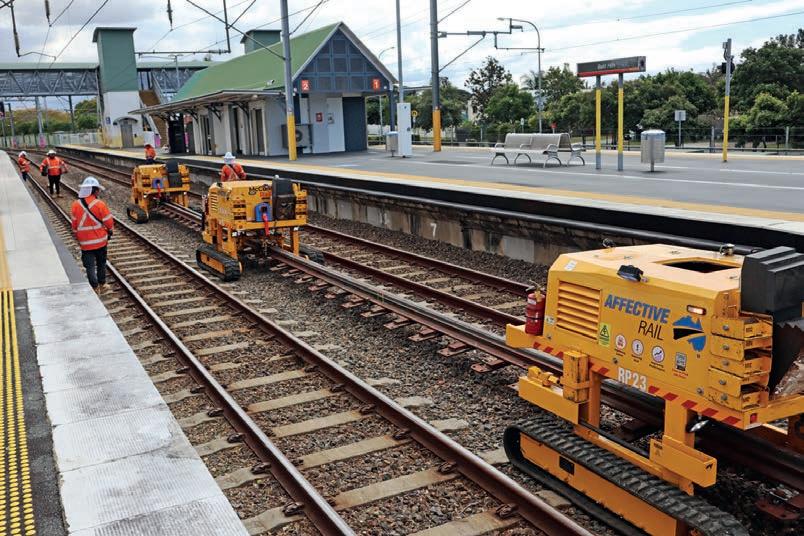

In the space of just two years, rail manufacturing has returned to Western Australia, almost three decades after the last locally made trains rolled on the tracks.
The new C-Series railcars will be delivered over an eight-year period as part of a contract that global rolling stock manufacturer Alstom has secured with the Public Transport Authority of WA (PTA).
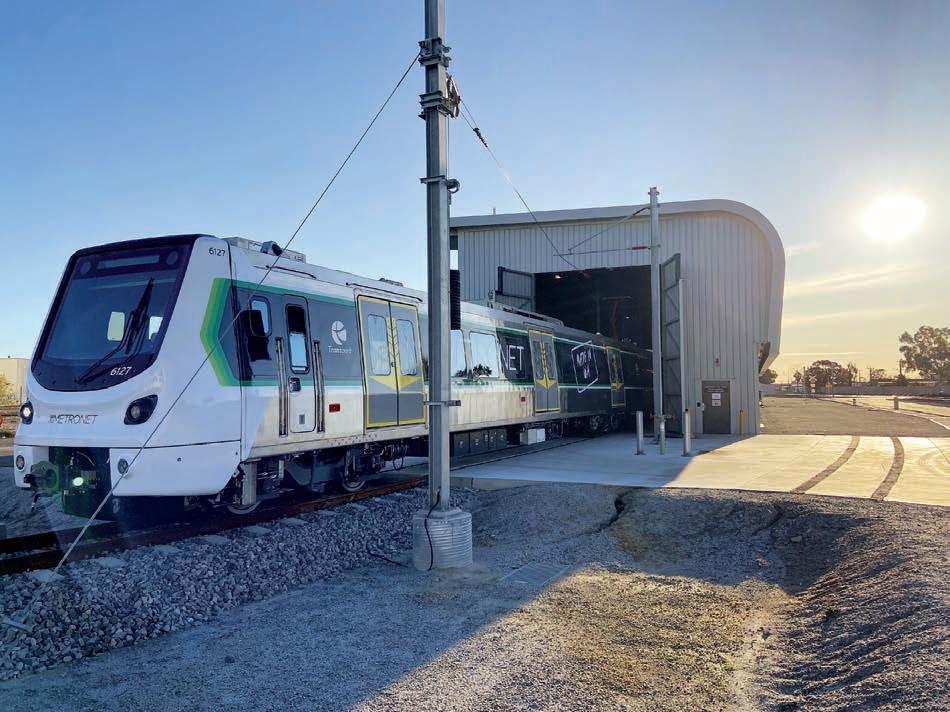
Under the contract, Alstom will be responsible for the design, supply, manufacturing, testing and commissioning of 41 six-car electric (EMU) and two three-car diesel (DMU) trains, plus 20 years maintenance of the EMU trains and maintenance support services for the DMU trains.
The new railcars will run along the Joondalup and Mandurah lines, two of the busiest services on the Perth network: and looking towards the future, there is a possibility
for additional lines as the WA Government carries out its plans to overhaul the METRONET public transport rail system.
The forecast is that by 2029, there will be up to 246 new C-series railcars locally built at the Bellevue manufacturing facility to service Perth’s growing train network.
The first six-car set completed high-voltage testing recently and will now move to the Nowergup Depot in September.
Here the set will undergo extensive dynamic validation testing period which is the last step before revenue service carrying its 103,000 daily passengers.
Alstom’s Project Director for the METRONET railcar procurement project, Fabrice Ponti, tells Rail Express that it has been quite a remarkable achievement to get to this stage.
“When the contract was signed in 2019, there was no rail industry in WA. Two and a
collaboratively to realise the WA Government’s vision to return railway manufacturing back to the state.”
Indeed, Alstom has a proven ability to localise its operations right across the globe, including Australia.
“Alstom has the expertise and experience to setup a new manufacturing facility, through extensive transfer of technology from its
Trains are being made locally in Perth once again, led by the expertise of rolling stock specialists Alstom.The first C-Series railcar rolls out onto the tracks.
“In parallel, the Government delivered the infrastructure for the project, the magnificent, modern, world-class facility in Perth at Bellevue, which was handed over to us in May 2021.
“We then fitted out and equipped the site with the jigs and tools needed, implemented our processes to the latest global standards and international best practices”.
The site is now fully operational and will be for the duration of the project.
The production employees are equipped with iPads, which they use on the job for production processes, record progress, report problems and access documentation.
This technology enables staff to apply Alstom’s AOS – Advanced Operations System – which connects all the functions around the shopfloor, whether they are part of the supply chains, industrial quality or methods teams.

“Alstom is operating in the digital world and this is well and truly implemented in Bellevue,” Ponti said.
The other important aspect of the contract is that the railcars will have at least 50 per cent WA local content, in a commitment to supporting local jobs, and boosting the state’s rolling stock supply chain, jobs, and skills development.

“This means building the trains locally and involving local suppliers that make and deliver components of the trains,” Ponti said.
The local components, materials and services are varied and many, large and small, such as bogie frames, battery boxes, passenger seats, air conditioning systems, and a whole range of metallic parts.
In the process, Alstom is also supporting the further development of the skillsets of the local supply chain.
“By using local suppliers, we help increase their range of competencies and qualifications, as the Rail Industry works with specific standards and requirements,” Ponti said.
“There was a significant piece of work around assessing the supply chain base in WA and the technical capabilities of the various suppliers.
“We then support these local companies throughout the duration of product development and production in order to ensure they deliver the product that we need.”
Ponti said training of the employees within the project has always been a priority.
“From the very beginning, even before we had a component or anything really in Bellevue, we set up a virtual reality room on site,” he said.
This was to ensure employees could start being trained for their specific roles in this 3D environment.
“We developed a competency matrix which covers every single staff working on the project,” Ponti said.
“It is used to define the extensive training period that every new employee goes through, from general training about the company to task-specific trainings like gluing, torque tightening or cable crimping. The competency of every team member makes the quality of the product in the end.”
Attracting trainees and apprentices is another priority.
“As part of our local employment initiative, we are also working with the North Metropolitan TAFE, East Perth, on a preemployment program for Indigenous people,” Ponti said.
“They will serve their apprenticeship on the project, with the view to continue their career with Alstom after they complete their apprenticeship.
“We expect eight to 10 Aboriginal apprentices by the end of 2022.”
The first C-Series trains are expected to roll into passenger service in late 2023.

Throw a dart on a map of Western Australia, and chances are high it will land on an area that bears the footprint of Allworks WA.
The ubiquitous provider of dry and wet hire equipment and personnel for the civil and rail industry is so well-regarded in the state that its client list reads like a definitive guide of the prominent names in the rail sector: for example, John Holland, Laing O’Rourke, Aurizon, Arc Infrastructure, and WA’s Public Transport Authority (PTA), just to name a few.
The family-owned business, with Angelo Sarich and wife Robin at the helm, has been operating since 1999, with its key staff each having more than 30 years of experience in rail and civil works.

“Our vision statement of ‘On Track, On Time’ drives and guides our well-equipped organisation to operate in a dynamic environment, offering our customers with solutions to ensure project timing and budgets are maintained within their expectations,” Sarich said.
“While our office is based in Wangara in WA, we also have depots in Port Hedland and Kalgoorlie, and we also cover programs and projects throughout Victoria, Queensland and New South Wales.”
Sarich said Allworks has demonstrated the ability to produce efficient, consistent
providing civil, rail and plant hire services throughout Australia.
“Despite variable demands and requirements, we have a proven track record of providing the right plant and equipment and the right operators,” he said.
“The pillar of our success to date can be attributed to our industry alliances and relationships which we have developed over the past 20 years.”
With a fleet of more than 300 machines and vehicles, Allworks has the ability to provide to any location mine-spec wet and dry hire equipment, as well as rail-specific items such as Hitachi hirail excavators, tamper heads and sleeper layers on excavators, and Volvo L120 oaders.
“We understand the requirements of modern rail services and our customers both current and future,” Sarich said.
“Combined with our extensive rail experience, our end-to-end rail infrastructure capabilities enable us to think creatively and laterally, as we understand every aspect of every rail scenario.
“We can innovate more efficient and
Angelo Sarich started Allworks 24 years ago.
safeguard the completion of their project on time and on budget. Allworks knows that our equipment and personnel are of great benefit, not only to the track owners but also infrastructure companies specialising in both routine and unplanned track maintenance.
“When services are integrated, everything runs more smoothly and solutions are found more quickly.
“That’s why our clients across Australia rely on us to provide rail infrastructure and rail support services throughout the country. We save time, we minimise delays, we deliver.”
Rail projects that Allworks has been involved with in the past 20 years include:
• Supplying accredited rail personnel and machinery for past 15 years to the PTA and John Holland Rail for its panel contracts in the metro area, on maintenance work and shutdown works including platform upgrades, turnout, and track replacement
• Supplying machinery, labour and rail-specific tools and attachments to BHP expansion projects in WA
• Supplying machinery, labour and rail-specific tools and attachments for the construction of the new FMG, Roy Hill, Rio Tinto railway lines in the Pilbara, as well as construction of the new Inland Rail project for John Holland
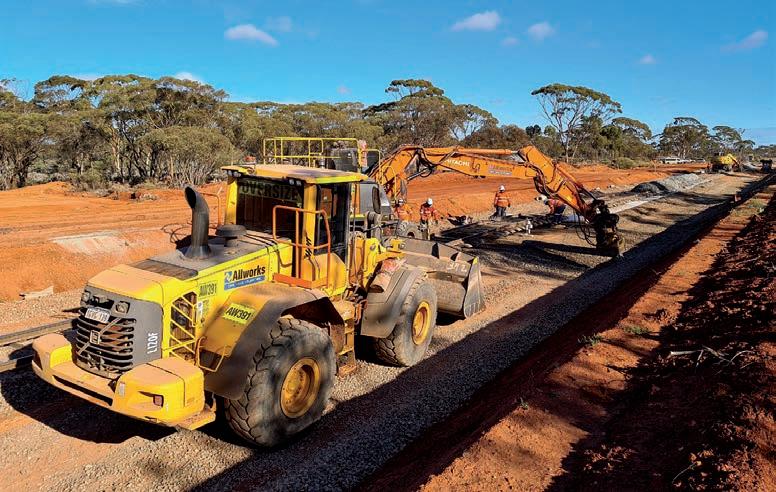
• Supplying machinery, labour and railspecific tools and attachments for the construction of the new Inland Rail project for John Holland
• Supplying machinery, labour and rail-specific tools and attachments for the construction of Perth’s METRONET program, including Claremont Station, Kenwick Rail Freight Facility, Bayswater Station, ThornlieCockburn Line, Morley-Ellenbrook and Forrestfield-Airport Link
alongside the running line whilst passenger trains where still running
• Assisting Leighton Kumagai with track construction and labour hire and assisting with earthworks in the Perth to Mandurah line tunnel in the CBD
• Involved with station upgrades in Perth’s

Northern suburbs with Lakis Construction completing the earthworks and level crossing installations on the northern suburb rail Supplying machinery, labour and rail-specific tools to Arc Infrastructure, Aurizon, John Holland, Monadelphous and Downer with ongoing regional network maintenance Installed turnouts into shed at the Forrestfield facility for Gemco Rail
Sarich started working on the railways when he was only 19, when he landed a job with Western Australian Government Railways, the operator of railway services in the state before being privatised in 2003.
After being retrenched at age 35, Sarich joined John Holland for a four-year tint, after which he bit the bullet and decided to start up his own company.
“Robin and I always wanted to work for ourselves,” he said.
“When I was working for Government Railways for 16 years, I would look at the small contractors who worked with the rail guys and think ‘that’s what I want to be’.

“We started Allworks 24 years ago, mostly focusing on the rail industry based in WA. We now work up in the Pilbara area, the wheatbelt areas around Perth, and we have started to move into the east coast of Australia as well.”
In his time, Sarich has seen many innovations taken up by the industry, but the development he has embraced the most has been the capability to monitor assets and projects via GPS tracking.
“Our tracking brings information instantly to the office, including hours, location, speed and daily usage,” he said.

“This level of detail has been of significant value and importance for us.”
“Our reliable, modern machinery with enabled technology and our talented staff are the backbone of our operation.
“Back in the day it was a different business to now. No one had the money to go and buy brand new equipment, so the business ran on secondhand equipment from skid steers and excavators to water trucks and semis.
“Today, we pride ourselves on the quality of product and services we can offer to our customers. And of course, we will deliver on track, on time.”

Key Source Rail is an end-to-end railway maintenance plant and equipment and parts supplier and railway solutions consultant, with offices and workshops in Midland, Western Australia, and Newcastle, New South Wales.
Boasting extensive railway wagon and locomotive building experience, the business oversees the design, manufacture, quality control and commissioning of freight and ore wagons, ballast wagons, grain hoppers, crew cars and locomotives for the Australian and overseas markets.
And that means the company literally does it all, as its motto goes, from the largest infrastructure owner to the smallest maintenance provider.
It’s backed by more than 120 years of combined in-house experience in rail operation, rail maintenance equipment, track laying, wagon building, rolling stock and wheel-set maintenance.
Gallagher said Key Source Rail was
Geismar is a recognised world leader in the manufacture of equipment and services for track laying, rail maintenance and track measurement and recording.

“As well, we are a supplier of BTI hard wearing tungsten carbide tamping tines, ballast wear plates and undercutter bars and chains,” Gallagher said.
Another notch in the belt is Key Source’s ownership of sole distribution rights in Australia and New Zealand for Rosehill removable crossings.
“We have overseen the supply and installation of these from the harsh conditions of the Pilbara to inner city, suburban and regional county installations in Victoria, WA and New South Wales,” Gallagher said.
A feature he’s particularly proud of is Key Source’s commitment to environmentallyfriendly operations and products.
“The railway industry has seen a recent committed focus towards environmentally
two environmental areas of reducing carbon footprint and industry sustainability.
“Key Source Rail has embraced these moves and, working with our suppliers, have focused on these two issues.
“We are addressing the first issue, the de-carbonisation initiative, by promoting new environmentally responsible technology such as the Geismar Activion battery-powered range of equipment.
“This electric-powered rechargeable technology is proving itself overseas, particularly in tunnel work and built-up residential areas where we get the additional bonus of having zero greenhouse gas emissions as well as reduced noise issues. On top of this we have the occupational, health and safety bonus of not exposing the operator to exhaust fumes.”
Meanwhile, the sustainability aspect is exemplified by the Rosehill rubber crossings, which are made from recycled tyres, instead of the traditional bitumen and concrete for
“Large railway owners are turning to this product and embracing this as a greener, more sustainable solution for pedestrian, vehicular and track access panels and crossings,”
“Rosehill panels are made from recycled tyres through a cold mould pressing process that produces a solid rubber, nonlaminated product that does not crack, chip
“The panels are produced to suit the profile of the sleeper design supplied by the customer. Rosehill panels are designed for a variety of installations ranging from pedestrian crossings, Rail Road Access Pads (RRAPS), medium duty crossings through to the heavy duty and extreme heavy duty Titan crossing panel used in extreme load and weather conditions found in the iron ore and other heavy duty mining industries.”
Rosehill field panels can be produced in standard widths to fit between the outside web of the rail to the end of the sleeper, or employed in a wide configuration, extending past the end of the sleeper and supported by a solid rubber edge beam to allow for
additional clearance for maintenance of way tamping operations.
Key Source Rail oversaw the installation of a heavy duty crossing on the technologicallyadvanced Rio Tinto Gudai-Darri project in the Pilbara, which endures extremely heavy traffic. Crossings have also been placed for Metro Trains Melbourne and the Sydney train network.
“Large rail owners and miners are starting to realise the value of installing these removable panels that enable easier track maintenance and jewellery inspection, and have the added green value of using recycled materials to replace concrete and bitumen,” Gallagher said. “The volume of concrete or bitumen displaced is a true carbon reduction credit.”
Key Source has assisted in the management of manufacture and the procurement of wagons and locomotives in Australia and overseas.
“We have a team of onsite inspectors based in China that carry out total production coverage. We are well versed in the needs of the country that the rolling stock is entering,” Gallagher said.
Some of the types of wagons include flat cars, well wagons, five pack wagons, grain hoppers, tanker wagons for fuel cartage, crew cars and gondola wagons for ore cartage.
“Evidence of the quality of our product can be seen in the 40 radio-controlled ballast wagons that we delivered to Martinus Rail last year,” Gallagher said.
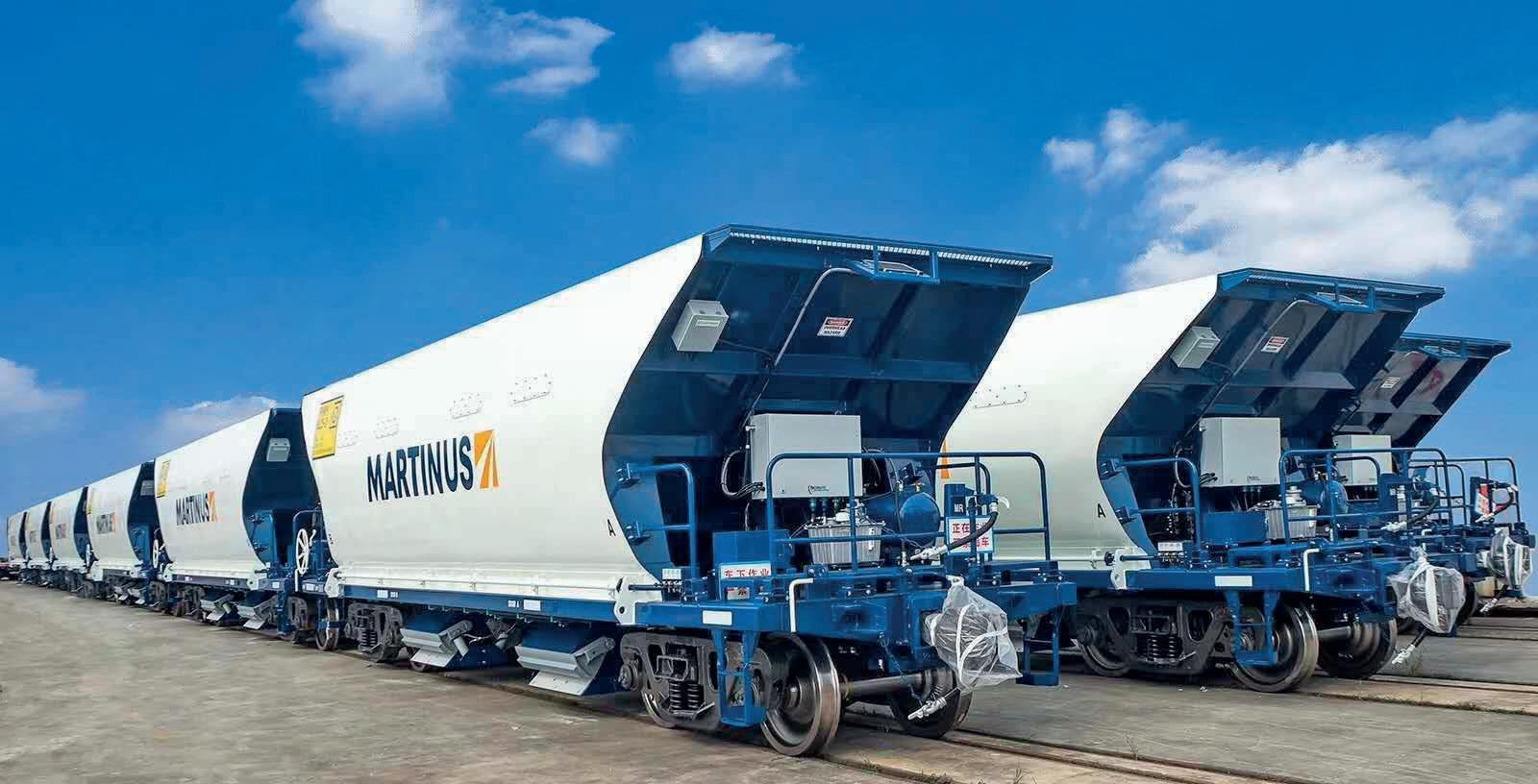
“The pneumatics and hydraulics were all manufactured in Australia and fitted overseas and the wagons were delivered into Queensland in 2021, and are state-of-the-art pieces of ballast laying equipment.”
Key Source Rail also carries a large range of rolling stock consumable parts, including Chinese 150 brake system components and
The company runs its own wheelshop in Midvale, Perth, that has been established purely for railway wheelset maintenance, including re-wheel, reprofile, new assembly and bearing inspection.

It has successfully undergone and passed extensive audit by wheelset owners across the industry and has been accredited to ISO 9001:2015.
“We remove all package bearings from wheelsets ranging from 50t to 130t axle load and overhaul and refit,” Gallagher said. “This includes stripping and overhaul of axlebox wheelsets for all freight and track wheelsets.
“Part of our process is to inspect all axles to customer-specific specifications. We use temperature compensating measuring equipment for all bearing journal measuring.
reprofile to any customer requested profile, eg ANZR-1, WPR2000, LW3, including all the various Pilbara requirements, including narrow gauge and standard gauge wheelsets.
“We are equipped to dis-assemble and assemble wheels on freight and track machine wheelsets to customers’ requirements, including the machining of wheelseats and boring of wheels. Being a relatively small yet versatile wheelshop, we can offer competitive rates and quick turnaround times to keep customers on the right track.”
For wheelset refurbishment, wheelset supply or new assembly inquiries, contact Allen Adams on +61 400 106 387.
For any enquiries about wagons, locomotives or any rolling stock parts, overhaul or replacement contact Terry Kiernan on +61 417 960 057.
For any queries about the Rosehill product, contact Steve Balfour on +61 408 917 480.

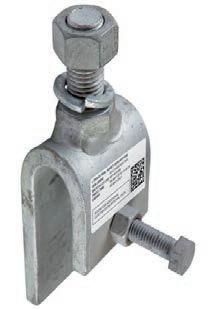




MFB is the market leader in quality Australian-made 19-inch data cabinets, server racks and equipment racks.
Its objective is to be the Australian market leader in design and manufacture of enclosures and metalwork for the comms, IT, security and defence industries.
Its robust S280 industrial 19-inch enclosures are fully welded metal fabricated units manufactured in Australia from either mild steel or 316 grade stainless steel.
All components have a zinc phosphate pre-treatment prior to powder coating, in the customer’s choice of colours.
The fully-welded units provide IP (Ingress Protection) attributes, conforming to Standards Australia’s IP codes of degrees of protection for enclosures.
As a minimum the enclosures meet IP54, where 5 = ‘dust-protected, limited ingress’; and 4 = ‘protected against water splashed from all directions, limited ingress’.
MFB S280 enclosures are third party accredited to IP66, where the first 6 = ‘dust-tight’; and the second 6 = ‘no entry of water from heavy seas or water projection’.
The S280s are built around the IEC 60297 19-inch racking format for data and electrical equipment. The range comes in a variety of heights measured in rack unit (RU) widths, typically 600mm or 800mm, and a variety of depths.
MFB sales executive Jack Grech tells Rail Express that because customer demands continually evolve, the company encourages discussion with clients to work on finding the best solution to meet specific requirements.

“Importantly our design team are conversant with sheet metal fabricating and machinery,” he said.
“Utilising Autodesk inventor full modelling
software, we can establish quickly possibilities of design to manufacture and also acknowledge limitations.”

The S280 split rack is a fully welded enclosure allowing users to separate key pieces of equipment, and in doing so allows
“In this application we have provided gland plates with suitable cable connectors, linking batteries to electronics,” Grech said.
“S280 enclosures house equipment safely and secure, and users can have peace of mind from vandals, vermin and the Australian climate.
“MFB offers a wide range of accessories to suit various applications, including shelving, power distribution, air management (both passive and active cooling) and cable management.
“If clients need them or even their own personal accessories fitted, MFB can accommodate the request. Our goal is providing assurance the racks will serve well and for many years to come.
“What is truly exciting is the opportunity we have to continue to adapt our range to meet the changing customer demands.
“We are a united front here at MFB with many years of experience, and by utilising this we appreciate what it takes to grow with the times.
“These types of applications require close attention to detail with clear and concise communication with our customers. We understand this challenge and relish any opportunity, seeing what begins as an idea then develop into a tangible finished product.”
Grech said that seeing customers return for future business provided the business with supreme confidence that it was “getting it right”.
freedom to separate potentially hazardous batteries and electrical components.
Operating a predominantly DC power supply format, the lower compartment of the enclosure is set aside for housing battery systems which in turn drive the electronics in the upper compartment.
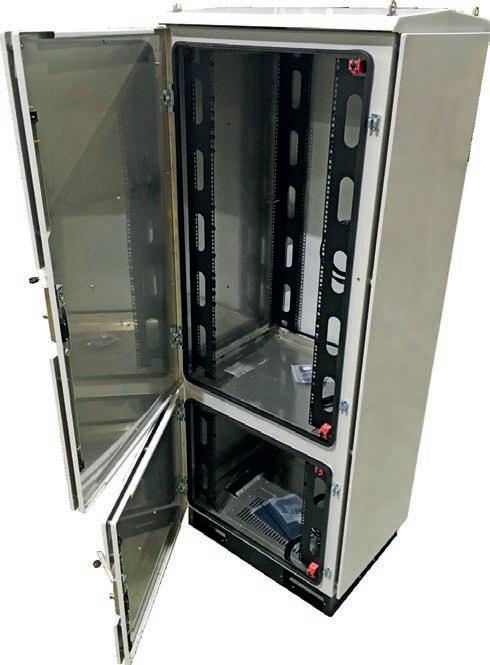
Because certain batteries give off gasses, the batteries are separated to ensure the electronics are not harmed.
“The success of MFB products is in our ability to continually monitor areas of growth and where we can assist in providing needed rack solutions,” he said.
“This mindset of continual improvement starts in design but runs through all of the departments of the company and is underpinned by our ISO9001 quality accreditation.
“Our mission has always remained the same: What is the best solution for you?”
The Australasian Railway Association (ARA) has developed a rail supply chain blueprint which outlines practical steps and activities that it will lead over a three-year period, working in collaboration with industry, government and stakeholders to support a more productive and sustainable Australian rail industry.
The blueprint lists a total of 50 actions grouped under the following themes: procurement; standards; local content policy; innovation and technology; type approval; sustainability; skills; and export promotion.
One of the many agencies that provides global supply chain standards expertise is GS1, a not-forprofit, international organisation that works with industry to develop and maintain standards for barcodes, product identification and other digital data attribute information.
GS1 Australia account director for freight, logistics, and industrial sectors, Tony Repaci, speaks to Rail Express about the organisation’s role in the ARA blueprint recommendations.
“Firstly, it’s important to note that Project i-TRACE was specifically mentioned in the procurement section as a mature, industry-wide initiative to assist with the foundational task of product identification,” he said.
i-TRACE is a rail industry, transformative initiative, providing critical building blocks upon which digital capabilities and automation of operational processes can be built.

It uses a common framework - GS1 Global Standards - to enhance the industry’s digital footprint across the use of parts, components and assets, providing:
• Standardised identification
• Standardised data capture (barcodes, RFID)
• Standardised, agreed material master data
“While Project iTRACE, and more widely GS1 standards, was specifically mentioned in the procurement pillar, the adoption of iTRACE standards has a significant opportunity to support the other steps, specifically standards, local content policy, innovation and technology, sustainability and export,” Repaci said.
“It will ensure a standardised approach for data capture, labelling, and electronic exchange to improve traceability of procured components to
GS1 enables end-to-end traceability and visibility of events that occur in the physical world.
reduce costs and improve safety and reliability for asset management.”

THE ROLE OF GS1
GS1 standards enable end-to-end traceability and visibility of events that occur in the physical world.
The organisation aims to:
• develop global, open, multi-sector standards


• provide training, education and support services on supply chain management



• promote and help implement the GS1 framework to facilitate best business solutions
The objectives of Project iTRACE include:
• providing the foundation to enable lifecycle tracking of an asset or component from procurement to disposal

• agreement on a standard to adopt for component identification and marking

• deciding on key data elements
• capturing information automatically
Repaci said with a focus on industry-wide efficiency opportunities to improve supply chain processes, the rail industry is working together to improve procurement by initiatives such as:
• Streamlining product/material identification and ordering process
• Reducing inventory write-offs and waste
• Improving maintenance and repair operations
• Reducing cost through less manual entries
• Improving traceability and warranty management

“When everyone uses the same standards, it’s easier to get things done. Just imagine if we didn’t have a standard way to measure time or distance,” Repaci said.
“It’s the same with our supply chain standards. They define ways to store and transfer data so organisations can exchange information easily and in a common format.
“Supply chain standards save time and money by reducing administration and slashing paperwork. Identifying, capturing and sharing information about the movement of products—and the digitalisation of everyday
business processes—not only enhances interoperability between stakeholders but creates a highly efficient, sustainable and collaborative logistics environment.”
GS1 uses the Global Product Classification (GPC) standard, which classifies products by grouping them into categories based on their essential properties and relationships to other products.
“Classification allows the grouping and organising of things, people or places based on their characteristics. Classification systems can be global, country-specific, industry-specific or often proprietary,” Repaci said.
“It enables the grouping of similar products and services across documents, systems and processes, the exchange of data and analytics, as well as insights from synchronised and harmonised data in multiple locations.
“It also enables cost-effective procurement optimisation and category management, and eTendering activities, where suppliers subscribed to classification codes can receive email notifications when tenders are published.”
Classification also provides accurate spend analysis, savings opportunities for inventory management, and supply source visibility.
Repaci said the Australian rail sector had not yet established nor adopted standard classification as part of the material master data and as a result there is a high degree of fragmentation or non-use.
“This is another area where we can improve. Component identification and classification can complement each other in the rail sector, to allow varying degrees of data detail,” he said.
“As the Australian rail industry builds its master material data attributes in a digital format, the opportunity to report and make data-driven decisions can only benefit both the operators and suppliers, by allowing more timely and informed decisions and allow our rail sector to be more competitive on a global basis.”
The rail sector can improve efficiencies by adopting standard classification as part of the material master data for operations.


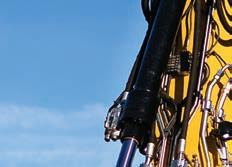
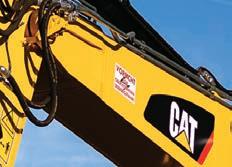
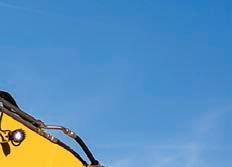



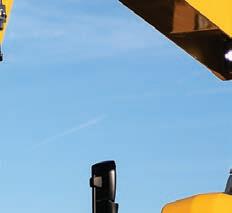

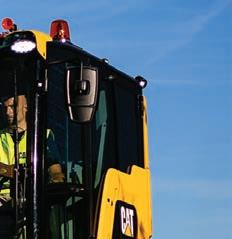










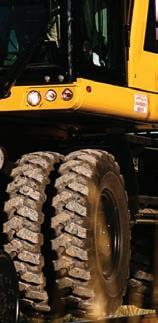




















































































As technological innovations get more advanced year by year, drive systems such as gearboxes and traction motors for trains are also progressively improved, and ultimately must be powerful, costeffective and require minimal maintenance.
These requirements are steadily getting more important because of the preference for increasingly long maintenance intervals and developments in weight of railway vehicles.
Gaining more importance in recent years is the ability of the bearings to withstand electrical discharge, especially frequent with the AC motors employed in trains.
Alternating current (AC)-powered motors have come into common use in locomotives because they offer many advantages over their direct current counterparts, including higher adhesion level, good torque control, more power saving due to better regenerative braking, and overall reduced maintenance levels.
However, currents flowing through induction motor bearings have the potential of creating
frequency short, sharp voltage pulses that can flow through paths that would normally be considered to be insulators. Currents now can flow through the magnet wire insulation, stator slot liners, motor air gap, bearing grease and stator slot top sticks, offering new opportunities for shaft and bearing current flow that can result in premature bearing failure.
It’s therefore vital that from a bearing design perspective, sensitivity towards electrical discharge must be considered.
As the world’s largest bearing manufacturer, it can be truly said that SKF provides reliable rotation
As SKF railway engineer Stephen Fasolo explains, roller bearings are used widely in the rail sector, and for good reason. They support and guide rotating or oscillating machine elements – such as shafts, axles or wheels – and transfer loads between machine components.
“They provide high precision and low friction and therefore enable high rotational speeds while reducing noise, heat, energy consumption and
“The rolling bearings are cost-effective and exchangeable machine elements that typically follow national or international dimension standards. And they come in a wide assortment of shapes, sizes and specifications: cylindrical, needled, tapered, or spherical, for example.”
SKF offers the full range of bearing types, many customisable to meet the requirements of applications of varying loads and speeds, and to enable easier maintenance in difficult-to-access positions. Plus, the company constantly engineers specially-designed components to improve performance of the bearings for whatever use
challenges mentioned previously.
This bearing typically consists of bearing steel and rolling elements made of bearing grade silicon nitride (Si3N4), which make the bearings electrically insulating.
Used in railway drive applications such as traction motors and gearboxes, they have been developed to improve performance and reliability under extreme application conditions.
The benefits include:
• Superior electric insulation properties even if exposed to high frequency currents
• Extended maintenance intervals due to longer grease life compared to all-steel bearings
• Energy saving capabilities because of lower friction and higher precision
• Extended maintenance intervals because of lower operating temperature
“Combining rings made of bearing steel and rolling elements made of bearing grade silicon nitride, these bearings are electrically insulating even at very high frequencies,” Fasolo said.


“They also have excellent tolerance towards poor lubrication and contribute to lower operating temperatures, leading to longer grease life.
“Hybrid bearings are dimensionally interchangeable with similarly sized all-steel bearings and can substantially improve reliability and robustness when incorporated into new or existing industrial equipment.”
Ceramic rolling elements are also so much harder than most solid contaminants that they will either crush contaminants or push them into the steel raceways, Fasolo said.
“This temporarily creates a depression, with raised edges, in the raceway. The dent is quickly over-rolled and flattened by each subsequent
SKF’s range of hydrid ball bearings are made to withstand electric currents flowing through AC locomotive motors.The components of an SKF hybrid deep groove ball bearing. A cut-out view of a hybrid bearing.
rolling element, which is also known as a kind of self-healing effect.,” he said.
Silicon nitride rolling elements have a lower coefficient of thermal expansion, which means they are more stable over temperature gradients within the bearing and provide more accurate preload/ clearance control. As well, when subjected to vibration, hybrid bearings are significantly less susceptible to false brinelling (formation of shallow depressions in the raceways) between the silicon nitride and steel surfaces.
Fasolo also cleared up misconceptions that the ceramic could be more brittle than steel.
“I can tell you this never happens. The ceramics endure much higher loads than steel balls before they get damaged,” he said.
“We’ve done experiments where we cut a notch into the ceramic rollers and then measure the loads they can withstand, and they’re much higher than one would ever encounter in service.”
From a cost perspective, the hybrids are also a better alternative to bearings that are insulated with coatings.
“Some bearing products use electrically insulating coating on the surfaces. The idea is the same: to try and prevent the passage of current,
but it’s not a complete solution like the way the hybrid is,” Fasolo said.
“When we compared costs to a customer for steel bearings versus the ceramic bearings, the cost difference was not significant. But when you consider the greater extension of life, the higher reliability factor, of the hybrids, then overall you would most likely end up with a cheaper bearing.
“And that’s the real benefit of hybrid rollers: they lead to lower overall costs over the life cycle.”
SKF is very mindful that greenhouse gas emissions need to reduce rapidly to net zero, and for this to happen, the global economy needs to transform from being dependent on fossil fuel to being carbon-free, circular, and clean.
According to SKF rail national manager Patrick Hofstadler, the largest contribution to this transformation lies in what the company can do with, and for, its customers; they need machines that can run cleaner, longer and more safely.
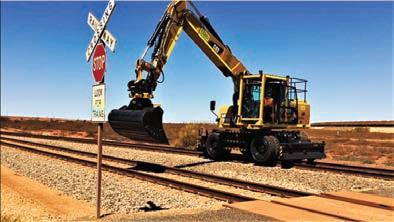
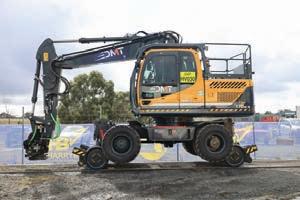
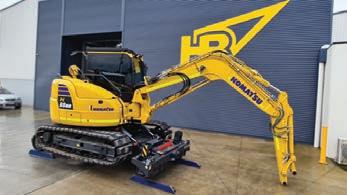
SKF already uses low friction bearing seals to help cut down frictional moment and wear, reducing energy use when hauling railway vehicles.

New generation seals are reducing temperatures
by 5°C compared to the previous seals, enabling about a 17 per cent increase in grease life to extend maintenance intervals and reduce lubrication costs.
From an environmental perspective, the increased lives cut the need to manufacture new bearings, grease and seals. Ultimately, these combined beneits will contribute to a reduction in greenhouse gas emissions.
The hybrid bearings are yet another string to SKF’S net zero greenhouse gas bow.

“Although the bearings aren’t very large, there are many ceramic parts and less rolling elements being produced of steel,” Hofstadler said. “This in effect already reduces emissions by lessening the amount of steel produced at the factories.”
“Reducing friction in the rolling of the bearing also saves energy, which also is a CO2 contributor, so that’s another way it helps.”
The new technology makes rail operations more efficient, effective and flexible.
A new era for train networks was ushered in in 2018, with the introduction of Siemens Mobility’s digital interlocking system: which essentially means all the interlocking operations of any railway system are managed digitally from the one spot.
The tool was employed by German railway company Erzgebirgsbahn in southeastern Germany, kicking off a revolution for rail control and safety systems.
The major feature of the new interlocking architecture is that the dispatcher’s switching commands are transmitted to the points, signals and track contacts via network technology.
As a result, previously required individual connections to the individual interlocking elements via, say, kilometre-long cable bundles, have been eliminated.
Signals and points can now be controlled with the interlocking network contacts from much greater distances via a data line.
This allows completely new flexibility in planning, making it possible to use intelligent field elements, and will generate positive cost effects over the longer term. All this is achieved while meeting the strictest safety standards for operations.
Siemens Mobility chief executive officer for rail infrastructure, Andre Rodenbeck, tells Rail Express that the interlocking technology is a milestone that will form the basis for higher capacities and improved punctuality in rail transport.

The latest update on the innovation was presented at this year’s InnoTrans event, the international trade fair for transport technology, held in Berlin.
“We showcased the interlocking innovation at the previous InnoTrans. This year we detailed how we have advanced to the first hardware independent cloud-enabled interlocking in operation,” he said.
Together with operator ÖBB-Infrastruktur AG, Siemens put this completely new digitalisation solution in the field of safety and security technology into operation at the train station in Achau, Austria.
“The “Distributed Smart Safe System” (DS3) forms the basis for cloud-enabled interlocking,” Rodenbeck said.
“The DS3 interlocking in the cloud for ÖBB is a real quantum leap for the railway industry. It enables the virtualisation of most signalling components, such as interlocking computers or ETCS (European Train Control System) computers.
“The trains send their position data by radio link to a central system which ensures safety, sets points, manages routes and sends authorisations to the vehicles. Siemens Mobility is proud to have developed this new signalling system, which will make rail operations more efficient, effective and flexible”.
This technology creates various new possibilities that were either entirely or nearly out of reach until now. For example, with signals and points smartly controlled, users can carry out innovative diagnoses, predictions of malfunctions and also predictive maintenance.
This will make rail traffic even more punctual and effective, thus enhancing the attractiveness of trains as a means of transport and increasing passenger satisfaction.
Because DS3 makes signalling hardware independent and cloud-enabled, infrastructure operators have the opportunity to completely integrate existing installations and systems.
The platform fulfills the world’s highest safety standards for rail safety and security and features other advantages like cost efficiency and flexible maintenance.
In addition, it contributes to sustainability, by providing savings in terms of space and energy,
compared to existing systems. In the future, interlockings can be significantly reduced and combined into one data centre.
“With the signalling via the cloud, we can run safety-relevant software on components off the shelf, not just for one single interlocking, but for a whole of the country,” Rodenbeck said.
“And that’s the great thing. Our slogan is ‘One country, one cloud’ or ‘One city, one cloud’, which means we can use the system at different locations and connected to outdoor equipment.
“In fact, we can run server farms wherever the customer wants – in the basement, in a bunker – connect it with IP architecture out there to the field. Distances don’t matter anymore and suddenly you can go into situations where you don’t need 300 interactions around the country, but just one major interlocking.
“We go into geo-redundancy, or the distribution of mission-critical components or infrastructures, such as server farms, across multiple data centres that reside in different geographic locations.
“In case of a crash, the backup lies somewhere else, not just next to the server anymore.
“So I could be in Germany and interlock with Australia. There could be interlocking in Sydney and the backup in Perth. You’re completely flexible, customers are completely flexible and obsolescence will play a much reduced role in that because you’re just running on a component off the shelf.

“Siemens is now ready to scale the system globally and move towards this hardware class as our standard. From our perspective, it’s the next big thing that we’re pushing out there, next to many other things that will come with it.”
The digital structure also has many
“And that is truly a major achievement because then if are running a GoA 2 (semiautomatic) train, you can reduce headway as you wish.
“You don’t rely on the driver anymore, you can run the trains automatically, have them decelerate at stations and stops efficiently and not rely on human error.
“You can also be sure your train is not breaking down because of old proprietary hardware; for example, in Germany, more than 50 per cent of the interlockings are still a relay or even mechanical.

“With the cloud-based system, you can go to complete areas, can re-signal them and with
that bring up to 100 per cent availability, as customers can immediately access the system and see what’s going on.”
Then there are the savings that can be made in terms of efficiency, especially crucial as the world faces rising energy costs.
“What drivers usually do is they drive as fast as they want,” Rodenbeck said.
“They either go to the highest speed and then they brake as much as needed, or adjust accordingly.
“Without the human element, there is more precision. So for example, if a train has to be at a junction in five minutes, it will drive as slow as it can and as energy-efficient as it can to make sure it reaches that point exactly after five minutes.
“Not faster, not slower, but exactly, and as energy-efficient as possible; and that is something that automation can do much better than any human being.
“We’re the first ones that are offering this kind of flexibility and architecture to our customers. So far nobody else has done that, and we are.”
The system has been rolled out in Australia, with a number of operators already using it and several tender applications in place across the country.
“You can compare it a bit to the time when telephones were still using copper cables and it moved to IP systems,” Rodenbeck said.
“This is what we’re doing here as well: suddenly you are not bound to physics anymore in that kind of aspect and you’re not bound to proprietary processes or these kinds of things.
“You can adapt to your needs much easier. Obsolescence will no longer be a big concern in the industry.”
Andre Rodenbeck.


Working in a rail depot is inherently dangerous –high speed vehicles, high voltage electricity and powerful machinery are just some of the risks staff face every day.
But the risk of human error is not something that should be accepted.
UK rail safety specialist Zonegreen has been finding innovative ways to reduce the risks to maintenance staff for the past 25 years.
The firm’s Depot Personnel Protection System (DPPS) safeguards workers by using powered derailers, linked to road end panels that control vehicle movements.
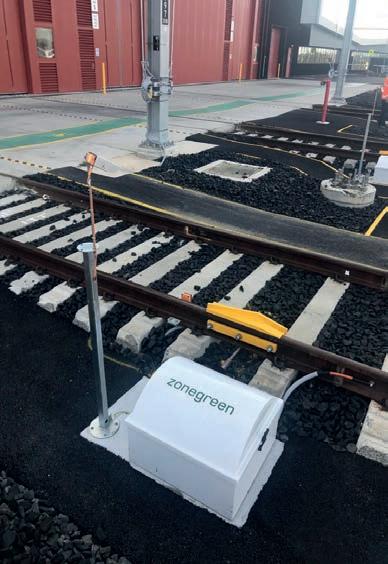

According to the company’s technical director Christian Fletcher, quality is the key to ensuring depot protection has a real and lasting impact on the welfare of staff and DPPS leads the way.
“Zonegreen’s system is tested, during and post-construction, to prove it exceeds the highest regulatory standards and offers unrivalled reliability. At its heart is the concept of ‘distributed
intelligence,’ which means there is no master controller or signal point failures,” he said.
“The result of this commitment to quality is that all DPPS installations meet the performance requirements of SIL 2 – an independent assessment of the relative risk reduction provided by a safety system. This has been achieved by employing standardised hardware and software, instead of relying on compliant off-the-shelf components and software of unknown pedigree.”


DPPS is the only depot safety system on the market that is independently certified to comply with the Electromagnetic Compatibility (EMC) standards and its latest RFID road end panel is certified by Eurofins to meet the EN standards for both radio emissions and railways.
Fletcher said DPPS was already protecting workers at some of Australia’s most advanced rail depots, including Wulkuraka in Queensland, Packenham East in Victoria and Auburn, New South Wales.
Zonegreen has partnered with Melbournebased Andrew Engineering, which completes all Australasian DPPS installations, provides local support as well as integrated interlocking systems.

For more information, contact Andrew Engineering on +61394570700, visit www.zonegreen.co.uk or follow the firm on Twitter, @zonegreen.

Women have made important gains in representation at senior leadership levels in recent decades and this is nowhere more evident than at the TrackSAFE Foundation.
TrackSAFE is Australia’s only harm prevention charity focused on reducing deaths, injuries and near misses on the rail network, working to improve the wellbeing of rail employees.
And it stands proud that in an industry such as rail, where 73 per cent of employees are men, it now boasts five female directors, or 38 per cent of its 13-seat board.
TrackSAFE directors include:
• Catherine Peppler, head of safety, health and environment, Aurizon
• Caroline Wilkie, chief executive officer, Australasian Railway Association
• Jane Lavender-Baker, group executive, strategy, culture and reputation, ARTC
• Kat Stapleton, chief executive officer, Queensland Rail
• Kate Bowman, chief corporate services officer, Pacific National
TrackSAFE’s two senior employees are also women: executive director Heather Neil and communications and engagement manager Hope Steele.
Stapleton said bringing gender balance to boards was important, with diversity and inclusion being key to leadership.
“In order to keep evolving and challenging the status quo of ‘that’s the way we’ve always done it’, having board members from different parts of the rail industry ecosystem provides a more holistic perspective,” she said.
“If we encourage more women into rail and others see the opportunities for an attractive and successful career in this industry, we will continue to see the closing of the gender divide, which will bring with it differing views to the table and different approaches to problem solving.
“Working for the rail industry isn’t about gender – it is about working as part of a safety focused, high-performing team,.
“The recent flood recovery in Queensland has been a perfect example with men and women working side-by-side, looking out for each other, rolling up their sleeves and ensuring we can get our network running safely as quickly as possible.”
Peppler, who has extensive experience in rail management in this country and overseas, said it was important for a board to have a diversity of
“The representation of woman across the rail sector continues to improve and women are represented in a range of roles including train drivers, network controllers, maintainers, electricians to name a few. Our collective experience is what helps us improve rail safety across the Australian rail sector.”
Lavender-Baker said there were lots of different types of diversity being encouraged across the industry, and gender was “an absolutely critical one”.
“Having a balance of genders around the table means you are making better decisions and you are far more representative of the community and the industry,” she said.
“As an industry board it is important that we lead the way in terms of what diversity looks like.
“Rail is a historically male-dominated industry so it’s even more important that boards like ours make sure that there is a there is an appropriate level of representation.”
Wilkie is particularly passionate about ensuring the industry continues to improve gender diversity.
of work that supports the advancement of women in the rail industry and provides practical tools to assist those seeking to improve gender diversity in their businesses.
“Some of the ARA’s initiatives include our Women in Rail Mentoring program and Diversity Council of Australia training program, which have both been incredibly popular.”

Bowman said having women in leadership is important, not only through the diversity it brings but also through the image it can project.
“Having women in senior positions and as board representatives demonstrates that shift in the industry we are looking for, to make it a more inclusive and diverse workplace,” she said.
“We want to show the world there are senior women in these organisations, particularly rail which, because of its history, has an image as oldschool male dominated, hasn’t changed in 100 years, is blue collar.
“Diversity in all respects is important, and it’s important to raise the bar for women in our organisations and our industry”.
A new Victorian Government initiative is helping more women enter the rail industry, with the chance to earn and learn while working on Melbourne’s rolling stock.

Women on Track is part of the $8 million Apprenticeship Innovation Fund which helps more women into traditionally male dominated fields – giving jobseekers the chance to get real-life experience manufacturing and maintaining Melbourne’s trains, while undertaking a Certificate II in Electrotechnology.
The practical component is being undertaken as part of the High Capacity Metro Trains Project which is delivering 70 trains, the largest single order of trains in Victoria’s history.
The program includes a bridging course to
ensure they are supported with the skills to gain the necessary licenses to work in tradesbased roles in the rail industry.
Women on Track is a collaboration between the Government, leading rolling stock asset management services provider Downer, Holmesglen TAFE, Hallam Secondary College and Doveton Hallam Community Learning Network.
The $8 million Apprenticeship Innovation Fund is supporting more people from underrepresented groups into apprenticeships, with almost $5 million specifically allocated to support women into meaningful and wellpaid careers in traditionally male-dominated trades such as automotive, electrical, plumbing and aviation.
Since 2014, the Government has made a
record $3.2 billion investment to rebuild TAFE and support universities and higher education to ensure Victorians have access to high quality education and rewarding career pathways.
A full High Capacity Metro Train service is on track to be running on the Cranbourne and Pakenham lines this Summer.
Public Transport minister Ben Carroll said there were many exciting opportunities in the rail industry.
“That’s why we’re supporting women who want to pursue a meaningful and well-paid career in a traditionally male-dominated area,” he said.
“We have 23 HCMTs now in passenger service on the Cranbourne and Pakenham lines with a full service expected for summer – and they’re trains built right here in Melbourne.”
Deborah recently won the Safety Initiative by a Young Rail Employee (Under-30) category at the 2022 RISSB Rail Safety Awards, for spearheading a business-wide change in understanding and managing fatigue.
The event recognises and celebrates safety achievements in the rail industry, promote diversity, excellence and innovation for the betterment of rail.
The discipline of human factors brings together principles from cognitive and health psychology, ergonomics and engineering, with a focus on emphasising that people are part of a system, so that system needs to take into account their limitations, needs, abilities and goals, if it’s going to be safe and effective.
Metro’s risk and human factors team had a goal, and that was to develop an innovative way to improve how the organisation manages fatigue, to ensure everyone is at their best to work safely and effectively. Metro has 6700 employees working in a variety of different divisions with ever-changing tasks and work conditions.
Through working groups, Deborah and her team listened to the individual experiences and feedback from each division.
Then, by developing business-wide
requirements, divisions could apply a more targeted risk-based approach, to meaningfully improve their processes to reduce risks.
Nominated by her supportive manager, Fiona Kenvyn, the pair and their team have made groundbreaking changes to a major function at Metro, helping to develop a program that has positive impacts on health and wellbeing.
“We’re doing something here that a lot of rail organisations have found challenging – shifting people away from just focusing on working hours to looking at fatigue as a credible business risk,” Kenvyn said.
“It’s a game-changer. We still have a long way to go, but this piece of work creates the framework for success, and we have the commitment from our safety leaders to make it happen.”
Deborah said it was exciting to see the industry embrace the idea that it needs to be doing more when it comes to managing the risks around fatigue.
“Our rail workers have to navigate environments that really put pressure on their performance: from demanding workloads, shift work and irregular working hours to managing errors that may arise,” she said.

Gain exclusive access to expert presentations and speakers, including international keynotes and panel discussions featuring senior industry leaders.
us for any of our exciting social events for a chance to connect with colleagues and peers. Tickets are selling fast for all of these, so get in quick!
Two action-packed days, all with exclusive keynote speakers, and industry events.
As the peak rail event in Australia, an AusRAIL 2022 partnership will provide your organisation with an opportunity to network with key decision makers, demonstrate your leading brand, or showcase your products, services and technical expertise in rail.


Every year, our freight logistics workforce delivers about four billion tonnes of goods across Australia – 163 tonnes of freight for every person.
Infrastructure Australia has observed the impact of growing congestion on our roads and railways is having on our capacity to move freight.
The forecast doubling of Australia’s freight task over the next 20 years will see even greater adverse impacts, with even more congestion reducing our capacity to move freight in a timely and cost-effective way.
One way to meet this growing task is to encourage modal shift of transporting freight, from road to rail.
In 2020-21, 230 tonne kilometres (tkm) of non-bulk freight was moved using road freight, compared with 111.9tkm moved on rail.
As indicated by Transport for NSW, one train can move as much cargo as at least 54 trucks.
environmental impacts.
One of the key ways that this outcome can be supported is through the continued development of Inland Rail.
The ability to more freight from Melbourne to Brisbane in 24 hours would transform the way freight is moved on the Eastern seaboard and particularly between major capital cities and the two ports, from a ratio of 30 per cent movement of rail to 60 per cent by 2050.
ALC is of the firm view that in order to meet the coming freight task, to bust congestion, meet demand and achieve efficiency, the Inland Rail project – which is well on the way to construction – should be completed with the essential links from Port of Melbourne to the Port of Brisbane.
Government and industry should work together and consider the possibility of providing efficient rail linkages to the ports of Botany, Port Kembla and Newcastle in New
Mode shift to Inland Rail will help the sustainability of the Australian supply chain through lower emissions, improved safety outcomes and less congestion across the
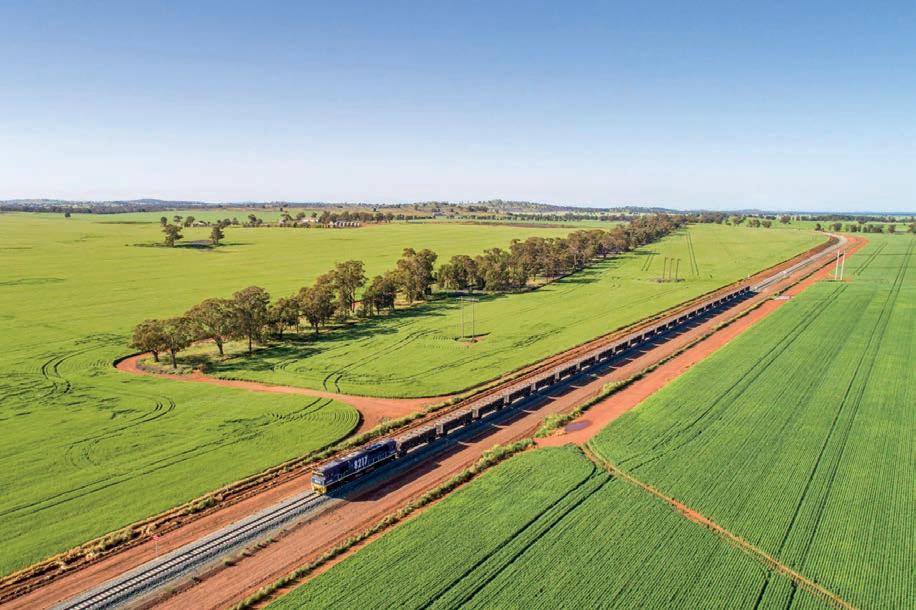
Recent CSIRO mapping suggests that intermodal freight switching from road to Inland Rail can achieve savings to users, including an estimated $90 per tonne (44 per cent reduction) in the unit cost of transport for freight moving along the entire length of Inland Rail between Melbourne and Brisbane.
This simple cost saving mechanism is critical in an environment of rising costs, the demand for freight services and the
Developing a comprehensive system wide intermodal policy for Australia and investing in infrastructure is critical to the success of rail.
Government and industry must work closely together to enhance the supply chain and improve the participation of rail in
Inland Rail should be completed, with a
 Dr Hermione Parsons Chief executive officer Australian Logistics Council
Dr Hermione Parsons Chief executive officer Australian Logistics Council

design permitting the movement of goods between the Port of Melbourne and the Port of Brisbane within 24 hours.
The Australian Government should ensure there is an appropriate equity investment into the National Intermodal Corporation that will facilitate investment in intermodals and programs that will facilitate the movement of freight on rail rather than road.
The creation of this agency, to support the delivery of intermodal terminals in Melbourne and Brisbane to maximise efficiency, is a good start.
Intermodals have a critical role to play in the freight supply chain – irrespective of whether the destination point is a seaport, inland terminal or airport, freight distribution hubs are key to the efficient movement of goods around Australia.
This will become an even more urgent task as businesses reinforce their supply chains and shift from ‘just in time’ to ‘just in case’ inventory systems to build resilience.
The impacts of the pandemic, natural disasters and the breaks in our critical linkages, such as the East West rail line, are forcing businesses to consider this change.

Bringing goods closer to market manages the risk of having vulnerable supply chains breaking down.
This increases pressure on demand for domestic logistics space such as warehousing and reinforces the need to ensure governments are planning for the future, allowing for room to move and underpinning urban freight planning in decision-making.
Increasing transport modes from road to rail is vital to keep freight moving.Mode shift to Inland Rail will help the sustainability of the Australian supply chain.
RISSB officially released version 6.0 of ARRM in the first week of August.
This latest release includes consideration of occurrences reported to the Office of the National Rail Safety Regulator (ONRSR) in the 2020/21 financial year.
We also recently completed an “ARRM Browser Enhancements” project. The project involved updates to the ARRM browser:
• A query field named “Hazardous Event Precursor” was introduced. This new field is the inverse of the “Hazardous Event” field, allowing users to more easily investigate the risks associated with precursor events. Users may also filter to specific precursor events to view only the associated hazards.
• The administration interface was updated to allow administrators to better manage organisations and users.
• The management interface was updated to allow managers to better manage users within their organisation.
• Users may now request that their password be reset. This feature directs the request to the relevant manager or administrator.
• Users may now request access to the ARRM. This feature directs the request to the relevant manager or administrator.
• Graphical query results may now be exported in PDF form for offline use.
The Australian Rail Risk Model is one of RISSB’s flagship products, providing objective, quantitative safety risk information to support railway decision-making.
The model helps rail companies understand their risk profiles in greater detail providing a sound basis for analyses, and ensuring decisions are ‘smart’.
The risk calculations in the ARRM are largely ‘fed’ by industry data and to date the model has considered around 300,000 reportable occurrences.
For more information about ARRM, please visit www.arrm.org.au

We also recently marked our anniversary of providing stewardship of ALCAM.
A significant amount of work has been done to progress the recalibration of this model with recent data, as well as introducing other enhancements, thereby ensuring that the information in ALCAM is as valuable as possible.
For example, ALCAM data is helping to underpin the National Level Crossing Portal (NLXP), a digital information system hosted on industry’s behalf by ONRSR.
Last financial year also saw a project to deliver training to ALCAM users progressed and we can now report that the ALCAM training strategy and training materials have been officially endorsed by the National ALCAM Committee.
The training will provide end users with the confidence, knowledge, and skills necessary to adopt and sustain the correct methods for undertaking an ALCAM assessment and utilising the Level Crossing Management (LXM) system whilst aiding in ensuring that data quality is maintained within the LXM system.
The National ALCAM Committee has teamed up with RISSB to lead the delivery of the training and all parties are now
working with subject matter experts to develop a training calendar.
While it is too early to provide hard dates, it is anticipated that these four-day courses, covering both theory and practical items, will start to be offered in FY 2022/23.
If you’re interested in receiving ALCAM training, please email: training@alcam.com.au.
Another string to RISSB’s data and risk management bow is the Culture Hub survey.
RISSB continues to provide the Culture Hub survey for industry’s benefit too.
This 40-question survey has been designed specifically for Australian rail companies to get a handle on their organisation’s culture so that improvements can be guided by evidence, and be measured and monitored.
Bringing all these information systems together creates a powerful suite of information systems, and our stakeholders are asking for more.
We’re exploring the possibility of several new systems that, if supported, will build on this capability and give the railway access to unprecedented reserves of information.
RISSB is building its data and risk management capabilities, recently releasing the sixth update to its Australian Rail Risk Model (ARRM) and marking the anniversary of its stewardship of the Australian Level Crossing Assessment Model (ALCAM).The ARRM home page.
AusRAIL is an event organised by industry for industry. It brings together our greatest minds to engage in our greatest challenges and opportunities.
Customer experience and the return to rail, sustainability, the evolving importance of rail freight, local manufacturing and the challenges facing the rail supply chain will all be hot topics on this year’s agenda.
The event also provides an important opportunity for our members and industry supporters to engage with attendees, effectively network amongst customers and suppliers, and be part of the conversation around innovation in the rail sector.
We are incredibly proud of the AusRAIL program, which features an impressive line-up of more than 60 industry leaders and technical experts.
I’m also particularly pleased that we will be staging this year’s AusRAIL in Brisbane.
Basing AusRAIL on the doorstep of the iconic Cross River Rail project provides a timely opportunity to explore this and the many other major projects underway in Queensland and other areas within our region.
The Queensland Government is investing $7 billion over four years in the Queensland Transport and Roads Investment Program, including significant investment towards rail projects as it prepares for the state’s forecasted population growth and the 2032 Olympic Games.
Delegates will have the opportunity to hear about the scale of growth that is occurring in the state during a keynote address by Transport and Main Roads minister Mark Bailey on the second day of the program.
Cross River Rail chief executive officer Graeme Newton will also share the project’s latest developments, while Department of Transport and Main Roads Deputy Director General (TransLink) Sally Stannard will discuss the recently launched SEQ Connect strategy.
We will also hear from Queensland Rail chief executive officer Kat Stapleton, who will share her insights from her first eight months of leading QR.

The program will feature keynotes by Infrastructure, Transport and Regional Development minister Catherine King, who will outline the Federal Government’s infrastructure priorities in the transport sector, Hitachi Global chief executive officer Andrew Barr, who will share the company’s global mission to become a climate change innovator, and 2022 Australian of the Year Dylan Alcott.
In addition to the plenary sessions, day one of AusRAIL 2022 will also feature a comprehensive program of technical streams covering specialist topics such as asset management, diversity and inclusion, sustainability, passenger rail, innovation as well as international perspectives from New Zealand and the UK.
Of course, AusRAIL is not just about hearing about the latest industry developments. It is also an opportunity to see, experience, and discuss the latest industry innovations on the exhibition floor.
The AusRAIL exhibition floor in Brisbane will feature the latest products, services and innovations at the Exhibition Hall, with more than 60 companies already confirming their place as part of the exhibition.
The Exhibition Hall will also include the exhibition theatre, lounges, a range of new activations and delegate working zones.
We are also expanding opportunities to make the most of your AusRAIL 2022 experience to connect, network and share information with key decision-makers in the rail industry by staging five exclusive networking events.
The inaugural Women in Rail breakfast will
provide an opportunity to hear from special guest speaker and Olympic champion Libby Trickett as we discuss the importance of improving diversity in the rail industry.
We will also host the Young Rail Professionals breakfast to bring together young rail professionals and industry leaders to discuss the issues impacting young people working in rail.
This will be a great opportunity to network with the industry’s emerging leaders and hear about the issues shaping the future of rail.
AusRAIL 2022 will also feature welcome drinks on Monday, December 5, and networking drinks on Tuesday, December 6, providing the chance to reconnect with colleagues and continue business conversations in a relaxed environment.
The pinnacle event of the AusRAIL 2022 social calendar will be the Yellow Dinner, which takes place on Wednesday, December 7. Attendees will be asked to come wearing a touch of yellow and enjoy a fun filled evening led by MC Shane Jacobson.
With more than 2000 rail professionals expected to attend from a variety of industry sectors including passenger, construction, freight and heavy haul, industry suppliers and manufacturers, make sure you make AusRAIL the must-attend rail industry event this December.
AusRAIL 2022 will provide the chance to reflect on the many successes of the year during a time of growth, change and unique challenges and opportunities for the whole of the rail industry.
We look forward to welcoming industry leaders, technical experts and key decision makers to be part of this important discussion.
For more information on AusRAIL 2022, including registrations and exhibition space availability, visit ausrail.com
AusRAIL 2022 will be held in Brisbane from December 5-7 to celebrate, network, discuss and engage on the latest rail sector developments from across Australia and New Zealand.
Queensland Rail
Queensland Rail will hire around 86 new graduates, apprentices and trainees across the state in the next 12 months, from the Gold Coast to Mount Isa.
A recruitment drive is also underway for hundreds of train crew as Queensland Rail prepares for the integration of Cross River Rail into the South East Queensland network, with positions opened to internal candidates before recruiting externally.
Premier Annastacia Palaszczuk said her government’s rail revolution, including delivering projects like Cross River Rail to get the south east transport network ready for the 2032 Olympics and Paralympics Games, was delivering a jobs bonanza to the State.
“Queensland’s biggest infrastructure project is not only creating jobs, it’s creating trainee and apprentice opportunities to make sure our workforce has the skills they need for the future,” she said.
“450 apprentice and training opportunities will be supported by Cross River Rail, with 328 already registered with the project.
“This is an exciting time for students and trainees, and the rail industry more broadly.”

The Premier said Queensland Rail was also undertaking one of the largest graduate intakes in its history.
“31 engineering, IT and business graduates will join the Queensland Rail team as we deliver more tracks, more trains and better services to Queenslanders,” she said.
“Better yet, as many as 55 apprentices and traineeship opportunities will be offered across a number of trades to build a new generation of railway workers.
“That’s a total of 86 new apprentices and graduates across the whole of Queensland, to boost the technical and trade workforce as we deliver major rail projects across the state.”
The Premier said the addition of Cross River Rail’s twin tunnels meant more train crew will be needed.
“That’s why Queensland Rail is hiring over 500 train crew (drivers and guards) before the inception of Cross River Rail, and upping the number of trainees, apprentices and graduates working on the rail network,” she said.
Transport and Main Roads minister Mark Bailey said Queensland Rail was looking for talented and diverse applicants, whether it be those seeking to change careers later in life, mothers returning to the workforce or young people who are just starting out.
“We know we need 210 new train drivers and 332 train guards to provide a quality public transport service when Cross River Rail comes into operation, which is why we’re starting the training and recruitment work now,” he said.
The 129-year-old Armadale Line’s transformation is another step closer with contracts awarded for the METRONET Byford Rail Extension and Victoria Park-Canning Level Crossing Removal projects.

The Victoria Park-Canning Level Crossing Removal Project, to be delivered by the Armadale Line Upgrade Alliance (Acciona Construction, BMD Constructions, WSP and AECOM), will also include removing William Street level crossing and building a new elevated Beckenham Station after federal funding was committed to the project.
This will now see the project:
• replace six level crossings at Mint Street, Oats Street, Welshpool Road, Hamilton Street, Wharf Street and William Street with elevated rail
• build five new elevated stations at Carlisle, Oats Street, Queens Park, Cannington and Beckenham
• create around six hectares of versatile public space and better community connections through elevated rail.
The Byford Rail Extension contract has been awarded to MetCONNX Alliance (Laing O’Rourke, Pritchard Francis Consulting and Kellogg Brown & Root) and will help create better transport connections for Serpentine Jarrahdale through:
• a new ground-level Byford Station with around 400 parking bays, a bus interchange, and pedestrian connections
• elevating rail through Armadale, with a new elevated Armadale Station
• removing eight level crossings at Armadale Road, Forrest Road, Church Avenue, Seventh Road (pedestrian level crossing), Byron Road, Eleventh Road, Thomas Road and Larsen Road – with works already underway on the Thomas Road project.
Collectively, these projects will support around 8500 jobs and will see Perth’s first major elevated rail through sections of Victoria Park, Canning and Armadale, with up to 14 level crossings removed for good along the Armadale Line.
With the expanded project scope to include William Street level crossing, the planned 18-month Armadale Line Shutdown will now start in late-2023.
This will allow more time to plan and will see the Byford Rail Extension and Thornlie-Cockburn Link projects open in 2025 – once the new elevated Armadale Line is operational.
The changed time frame ensures commuters are only impacted for one AFL football season instead of two, and avoids major events such as the 2023 FIFA Women’s World Cup.
The Australian and Australian Capital Territory governments have awarded Canberra Metro the contract to provide five new light rail vehicles (LRVs), make modifications to Canberra’s existing light rail fleet and build an expanded depot.
Canberra Metro is a consortium consisting of Pacific Partnerships, CPB Contractors, John Holland Group, UGL, Mitsubishi Corporation, Aberdeen Infrastructure Investments, DB Engineering & Consulting, CAF and Mitsubishi UFJ Financial Group.
The group was also contracted for the design, construction, operations, maintenance and financing of Stage 1 of the light rail system.
Five new LRVs from manufacturer CAF will be progressively delivered from 2024, and the existing light rail fleet of 14 vehicles will be retrofitted with onboard batteries, so all vehicles can operate on the wire-free extension to Commonwealth Park and on the future Stage 2B extension to Woden.
The five new LRVs will allow existing vehicles to be temporarily moved out of service, to retrofit them with batteries, without impacting current light rail services.
The light rail depot at Mitchell will also be expanded for the ongoing maintenance of the larger fleet of LRVs.
The depot work is expected to be completed in early 2024 – ahead of the new vehicles progressively arriving soon after.
The next steps in the light rail Stage 2A project are the commencement of main construction works to raise London Circuit, which will commence soon.
This will be followed by the submission of an environmental assessment and works approval application for the Stage 2A project, so construction of the light rail line can commence soon after raising London Circuit is complete.
Canberrans will be able to have their say on the final light rail design early next year, when it goes on public display as part of the works approval application.
Stage 2A is jointly funded by the Australian and ACT Governments.
The trust can only be built with the








and a deep understanding of the

industrial sectors.
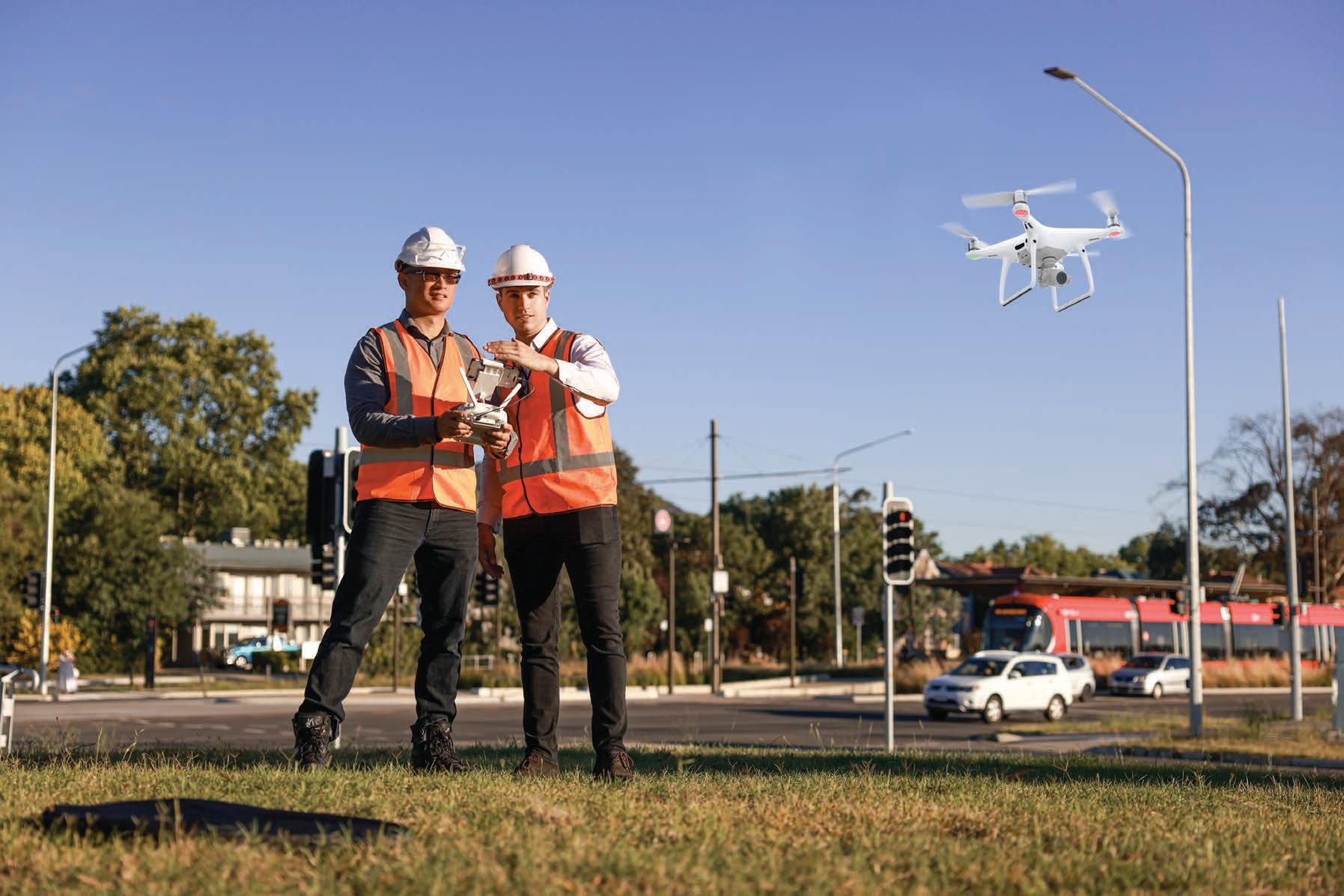
or crafting a creative execution, we have the global
Whether it is identifying a strategic
with a unique solution.
is a symbol of trust.
